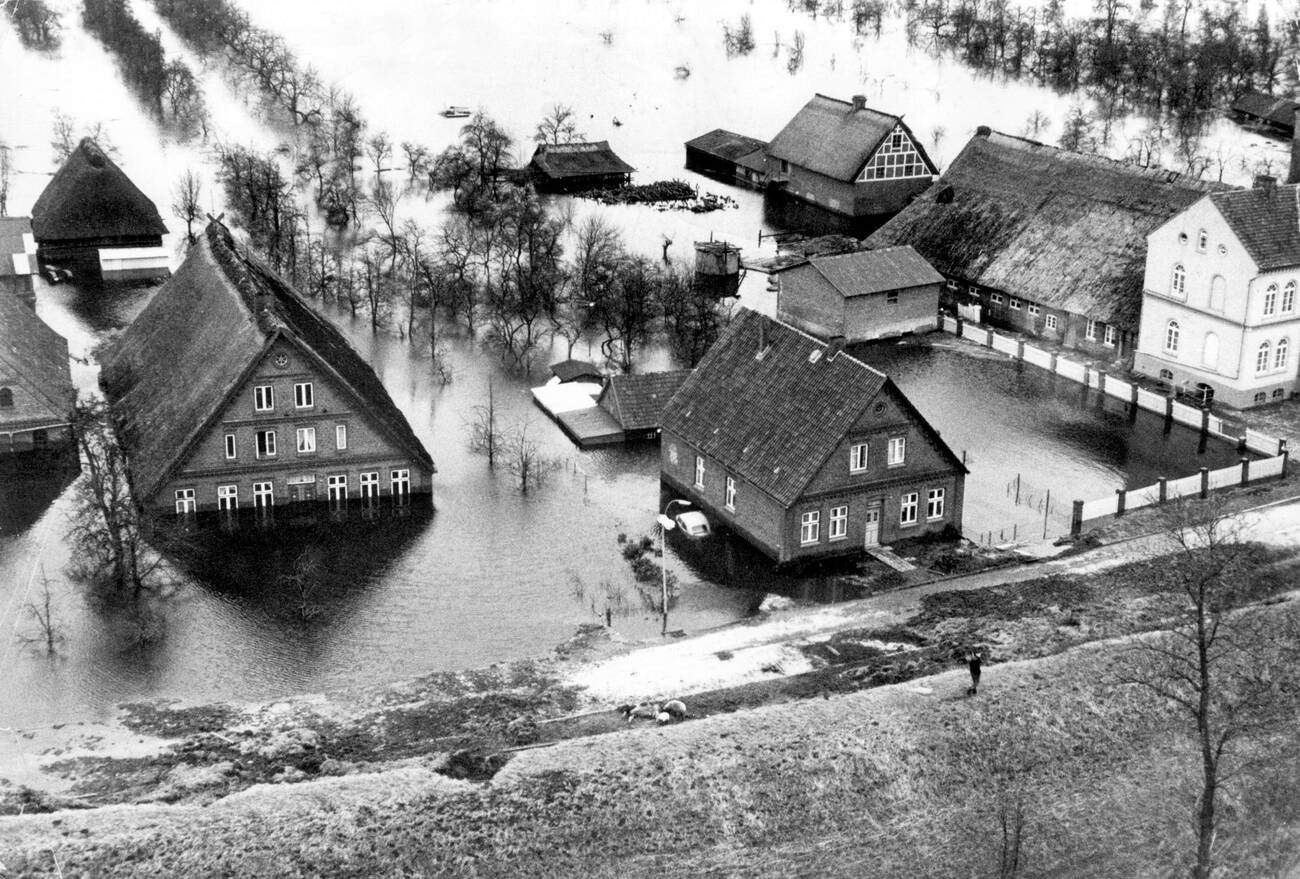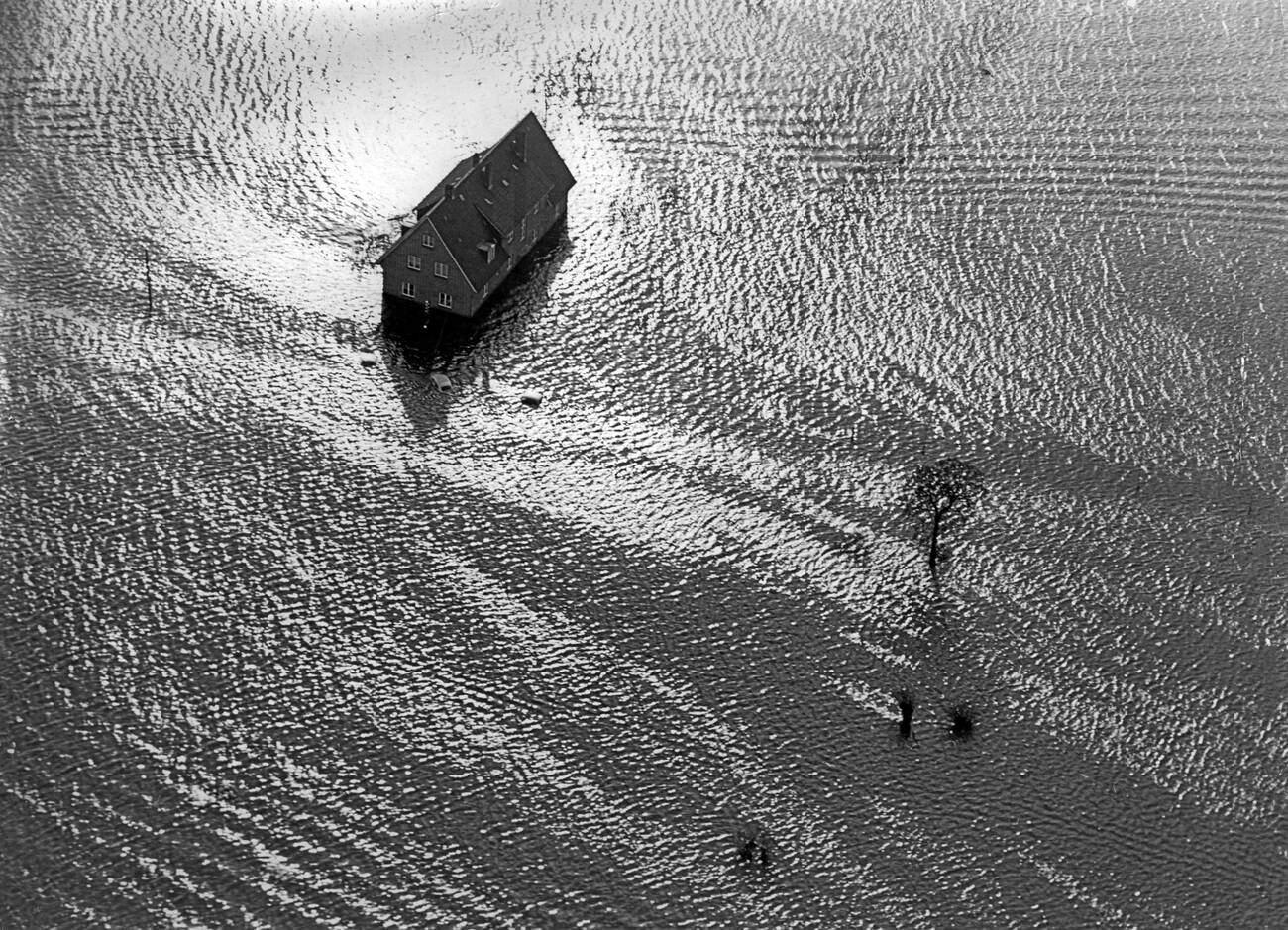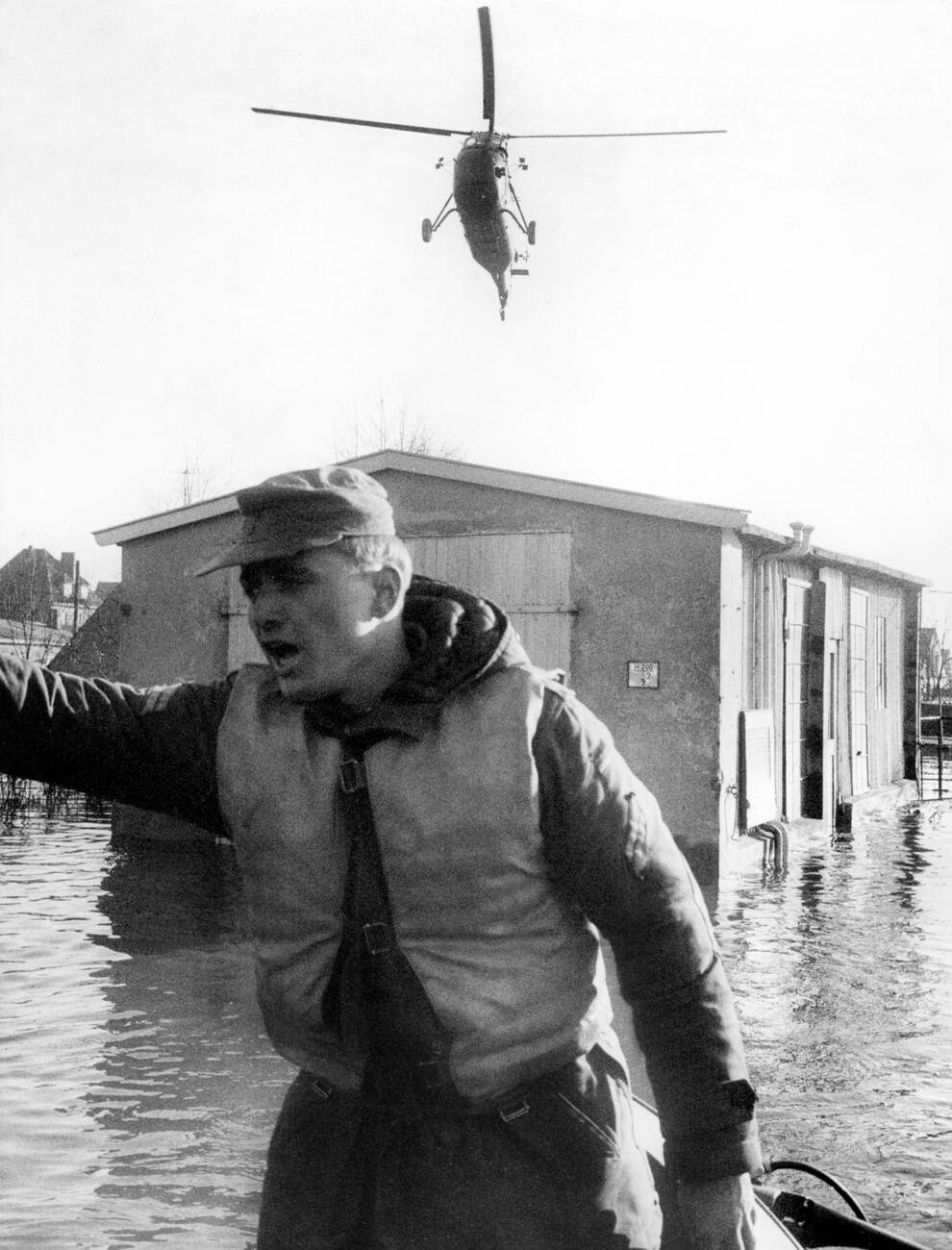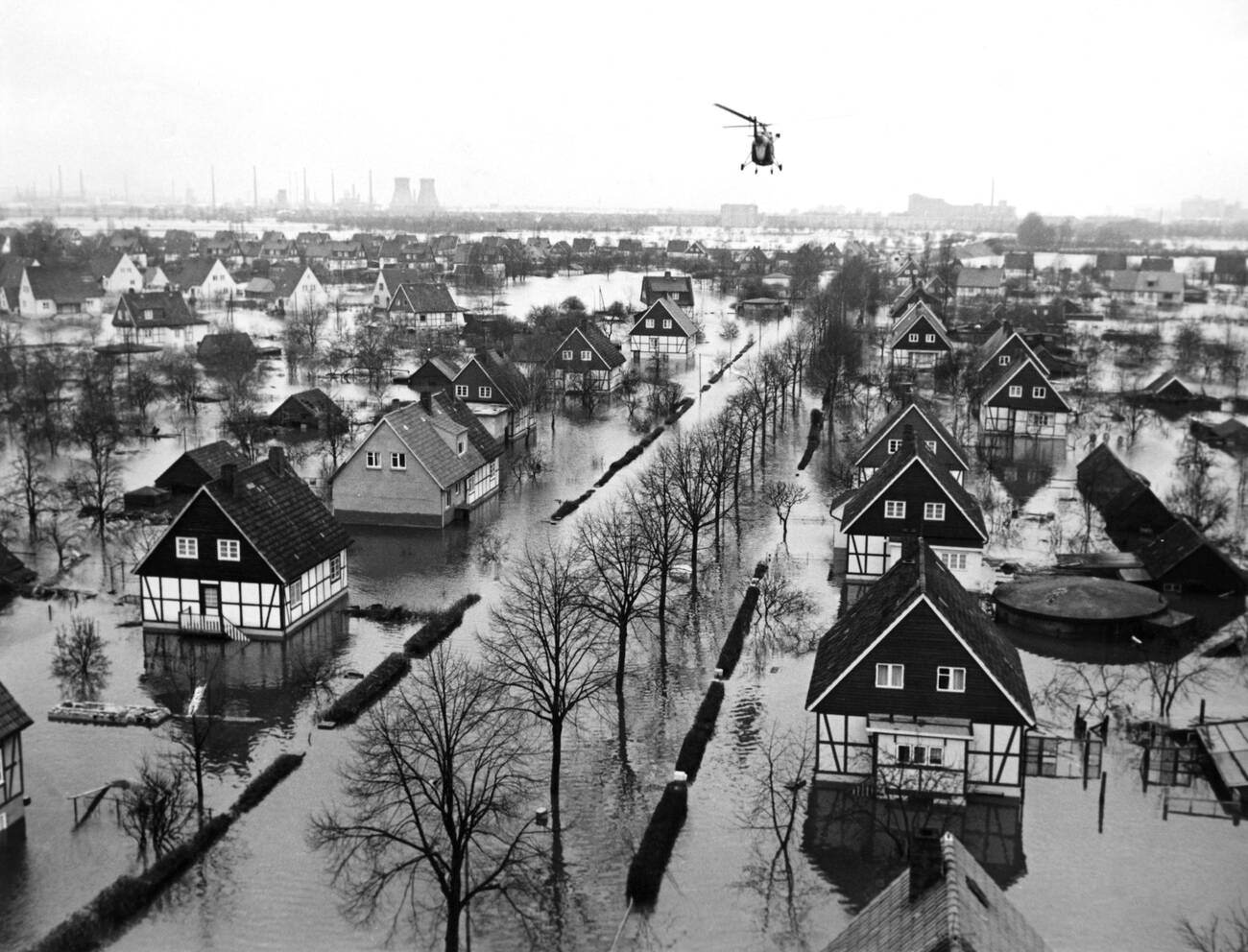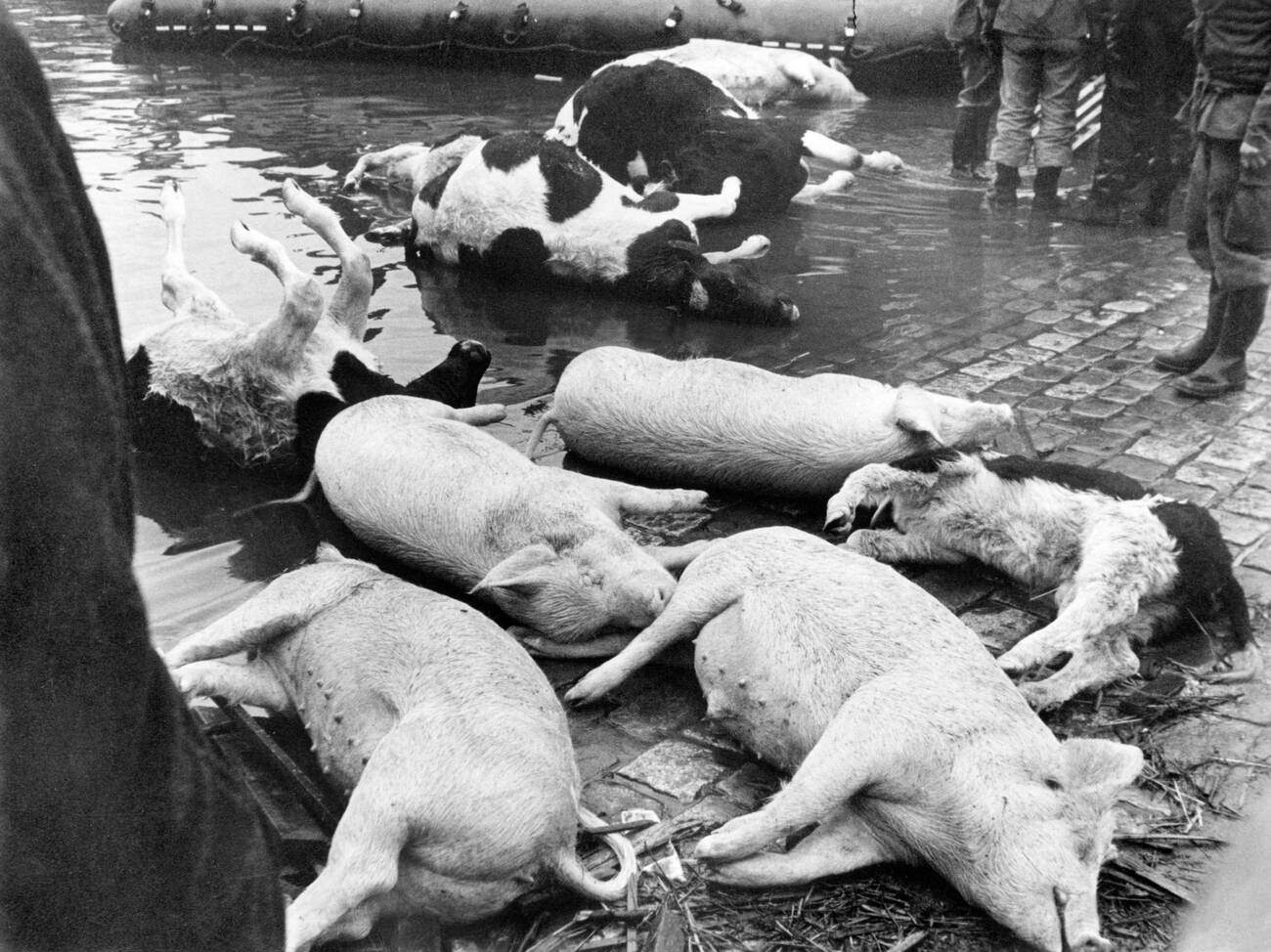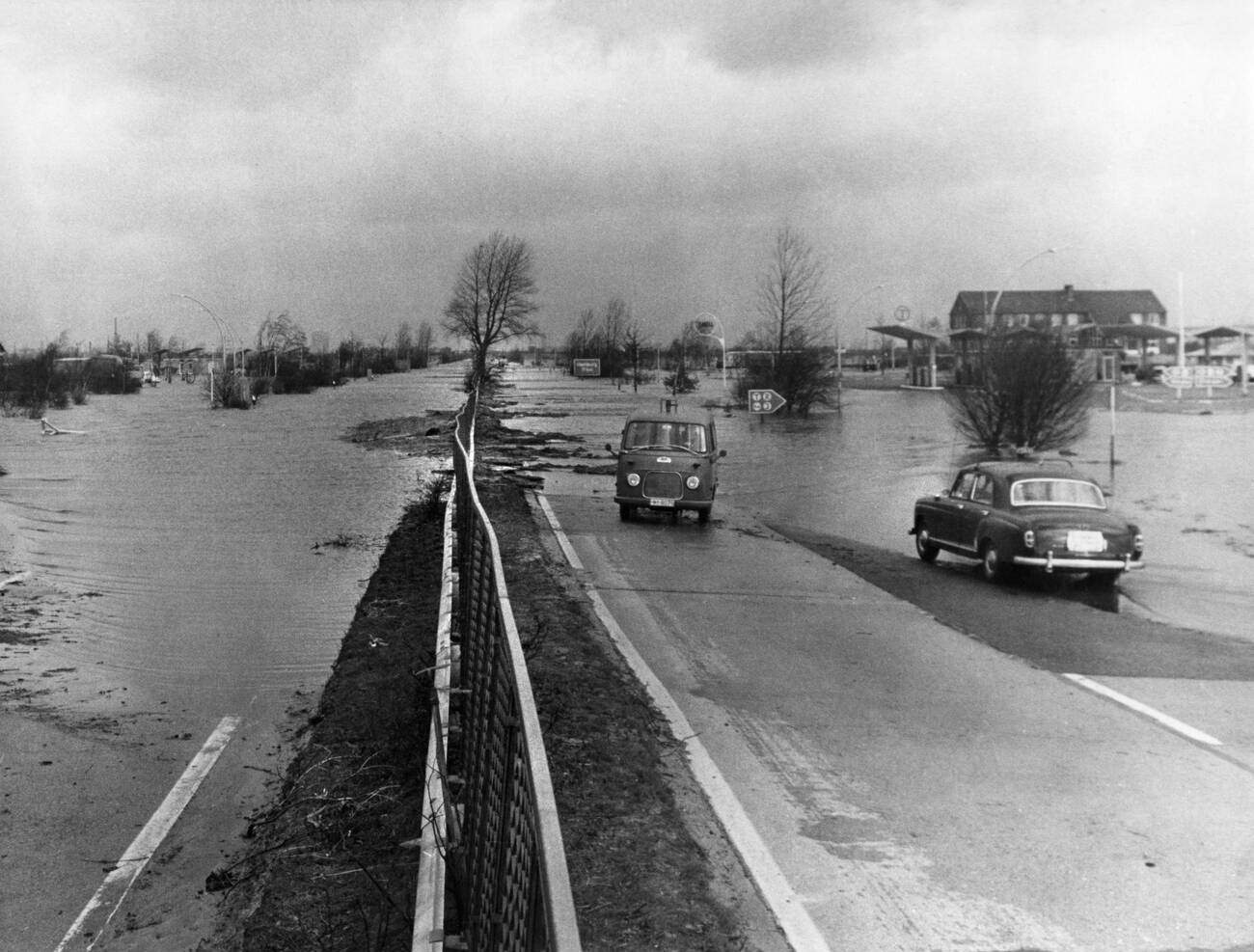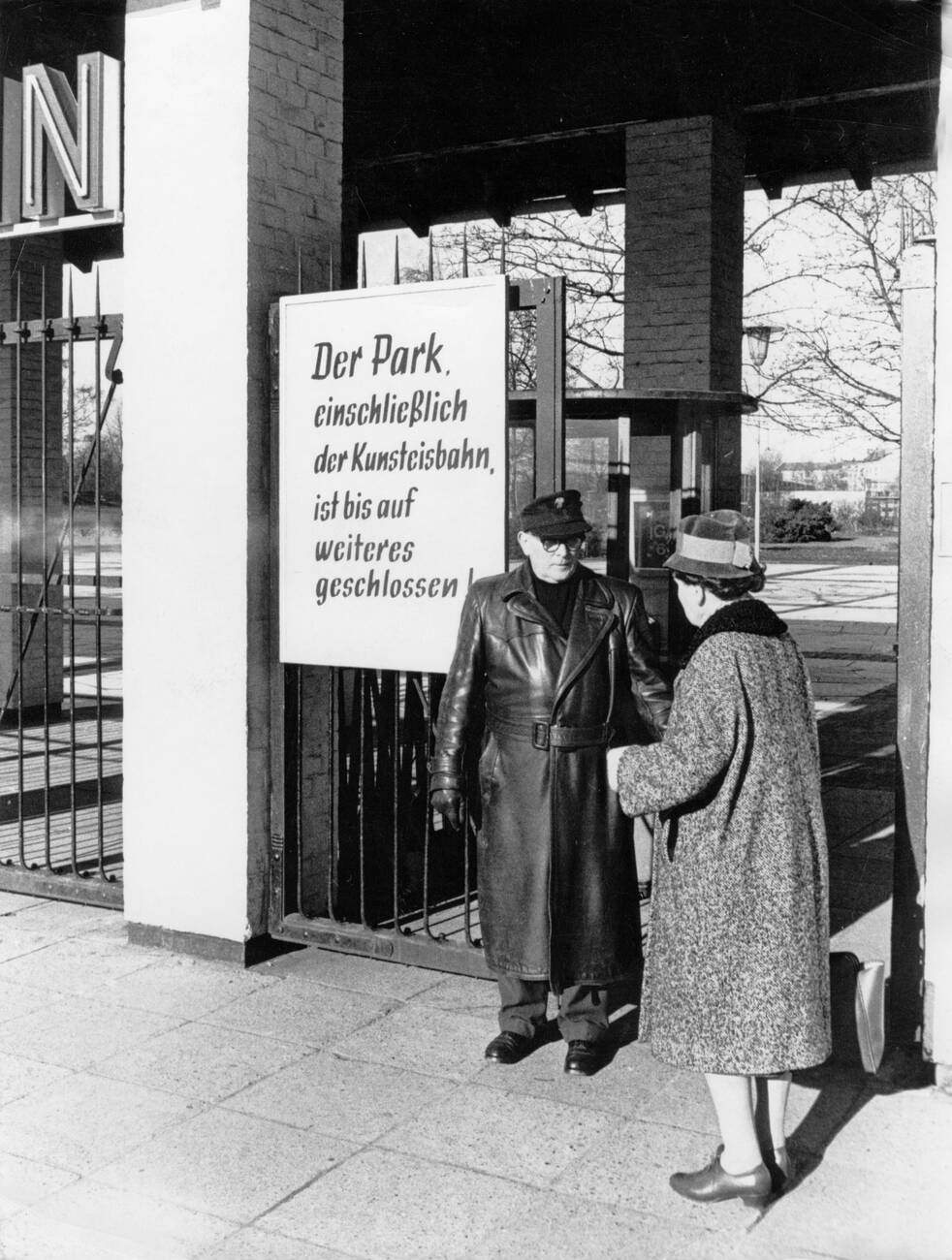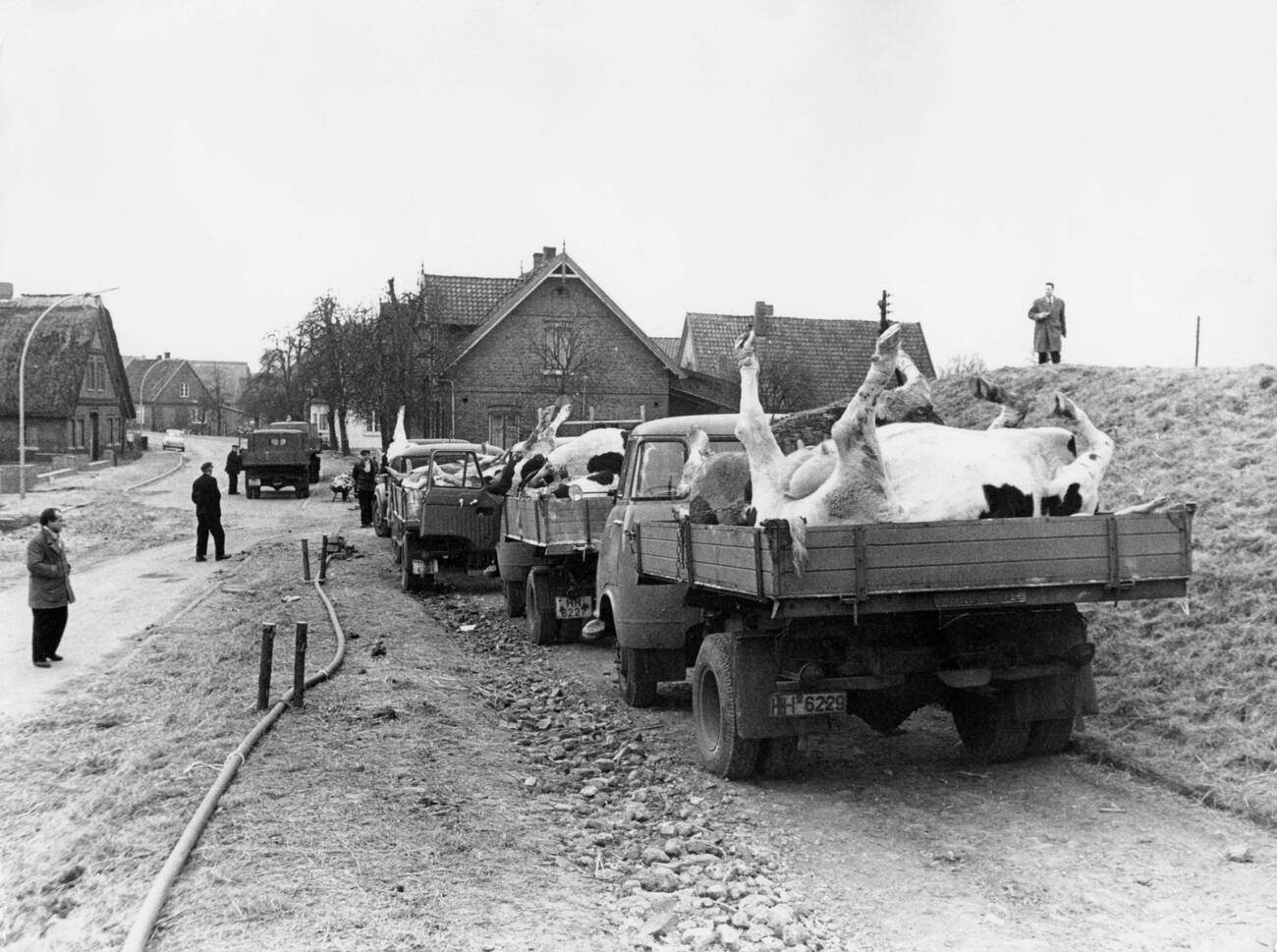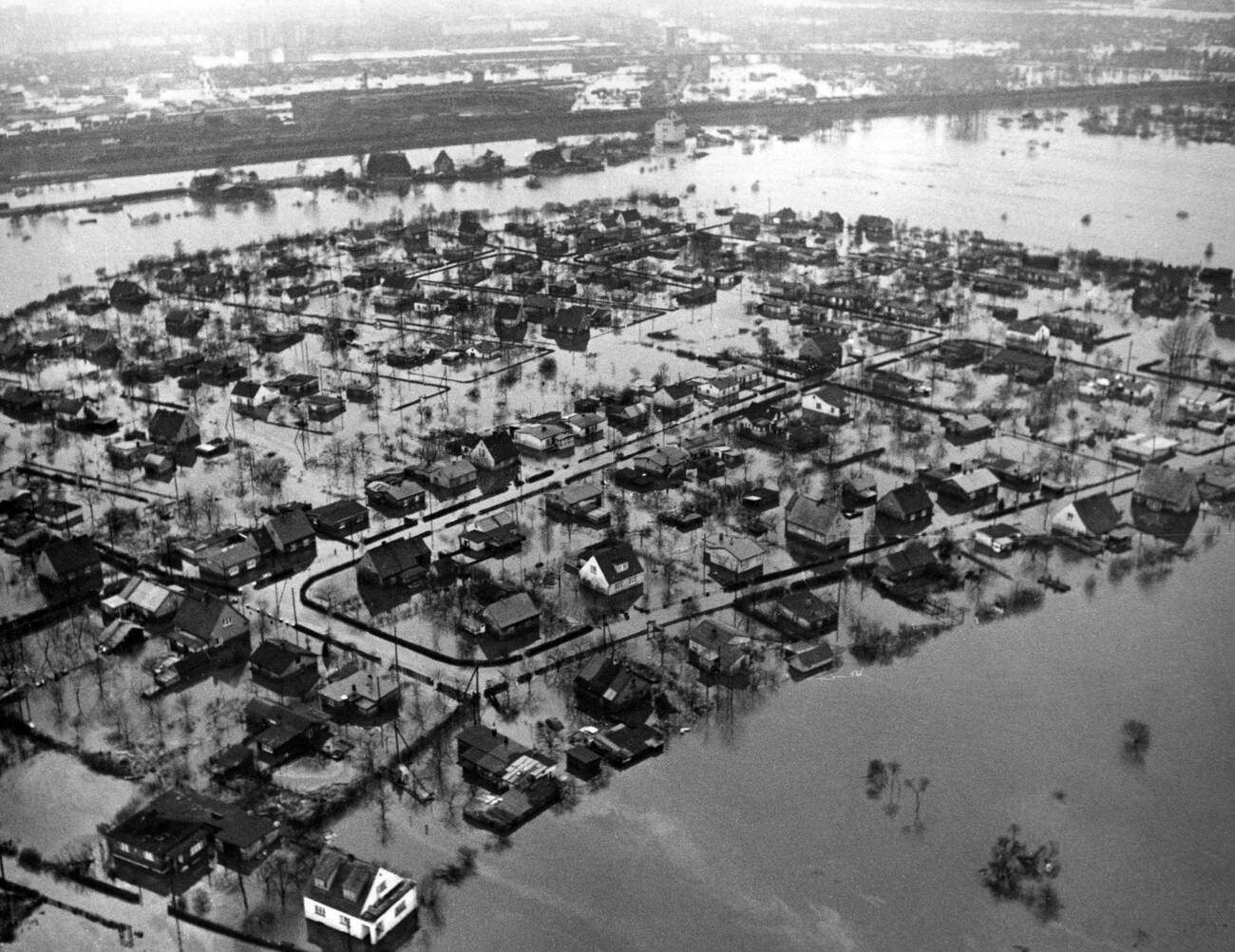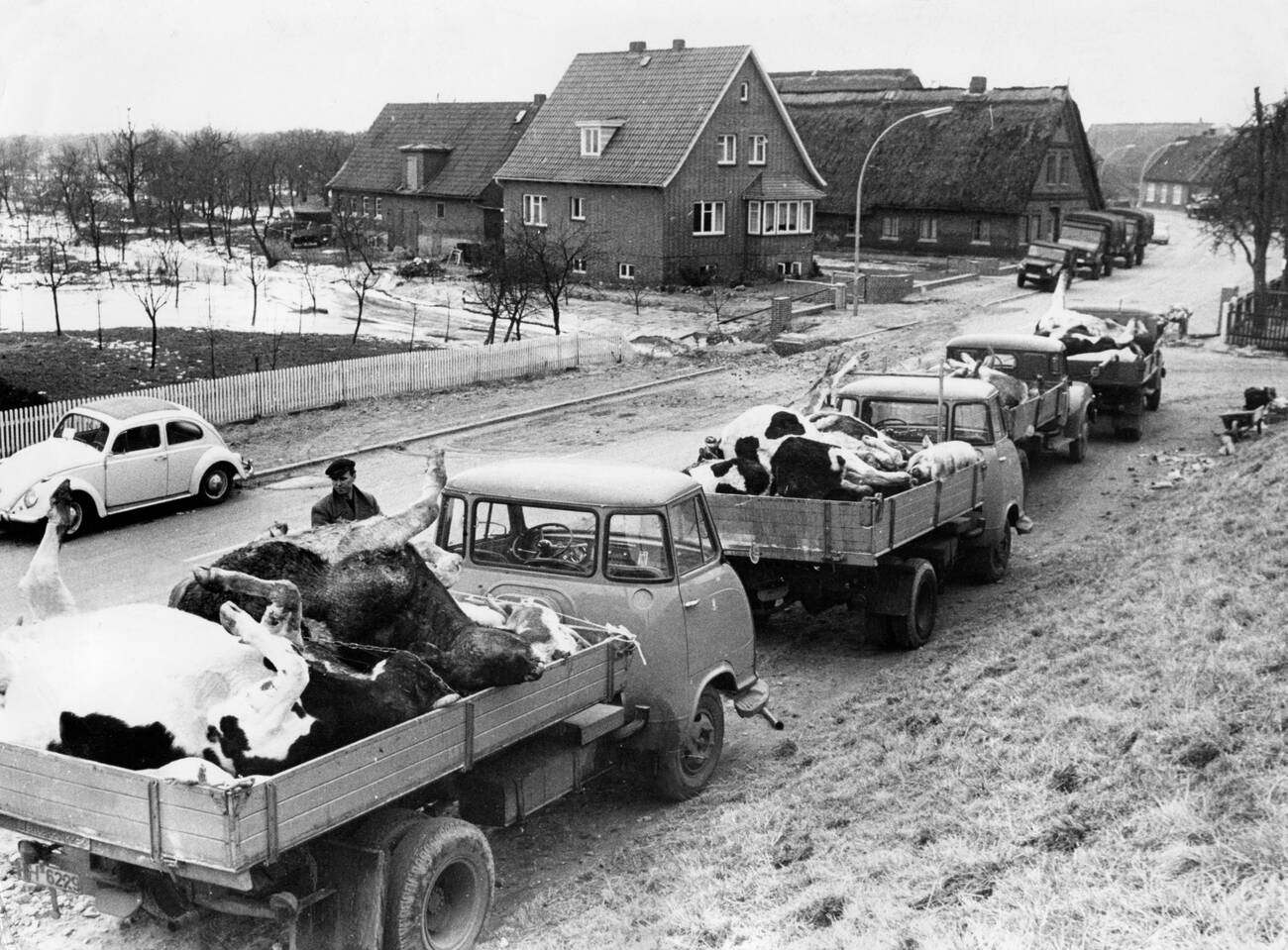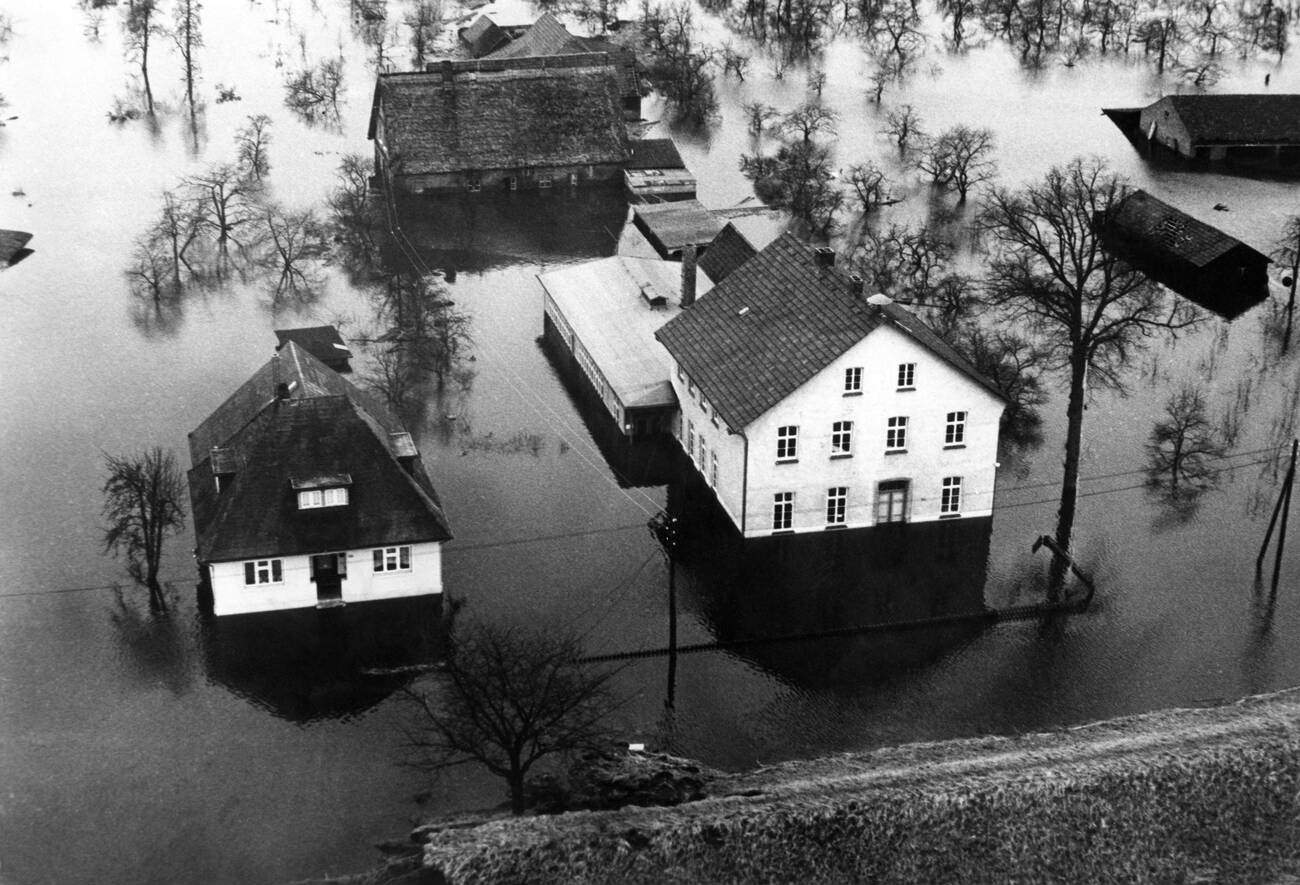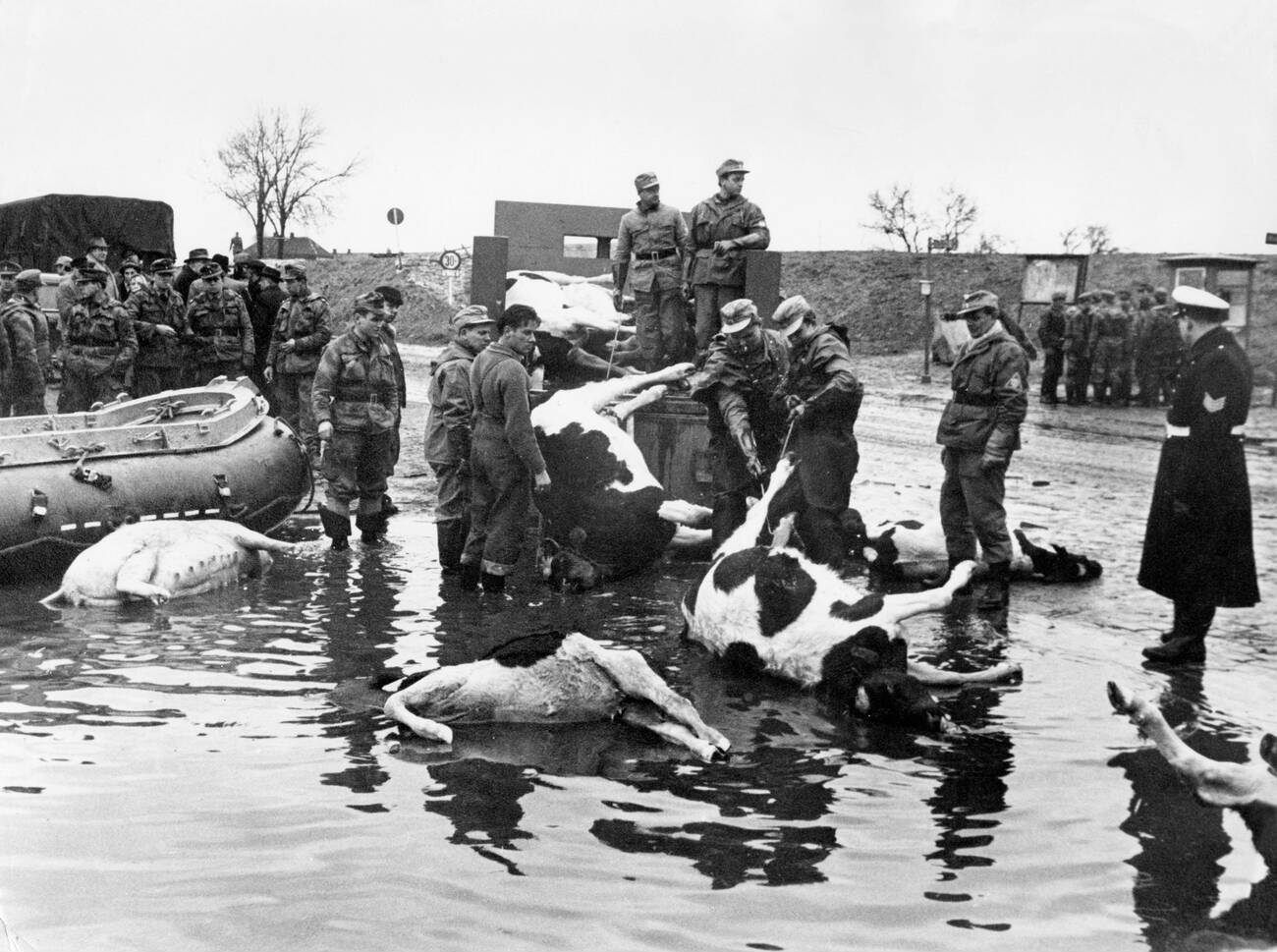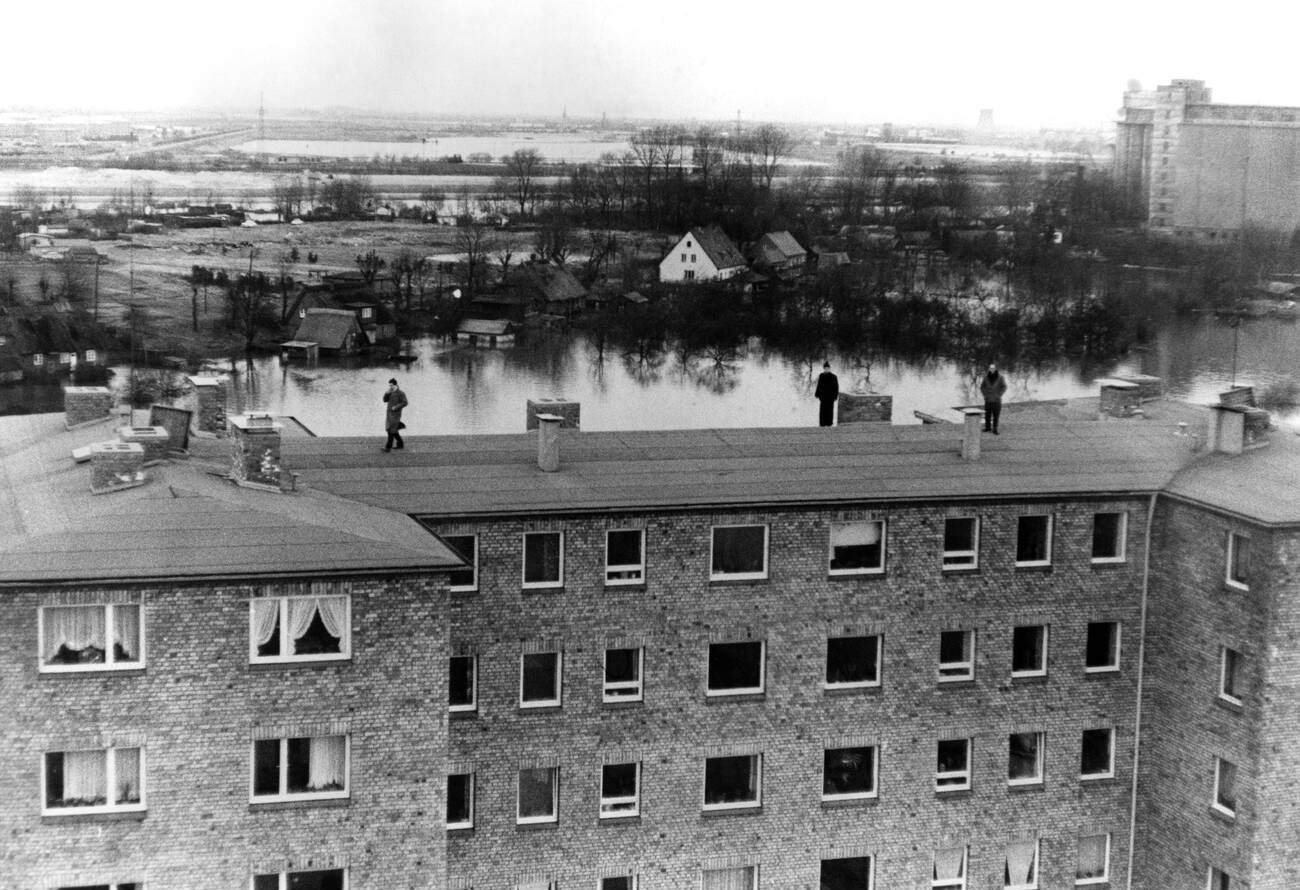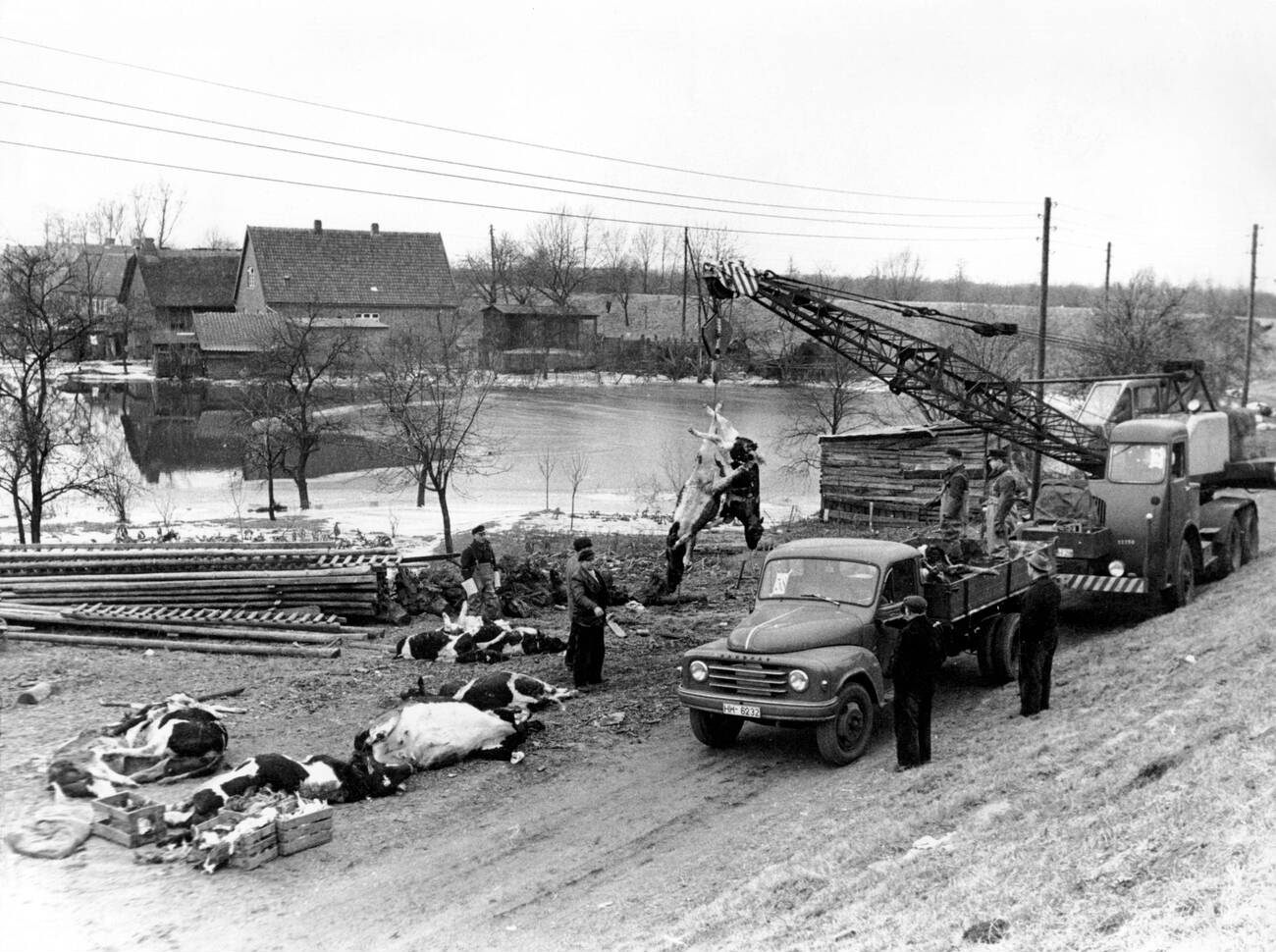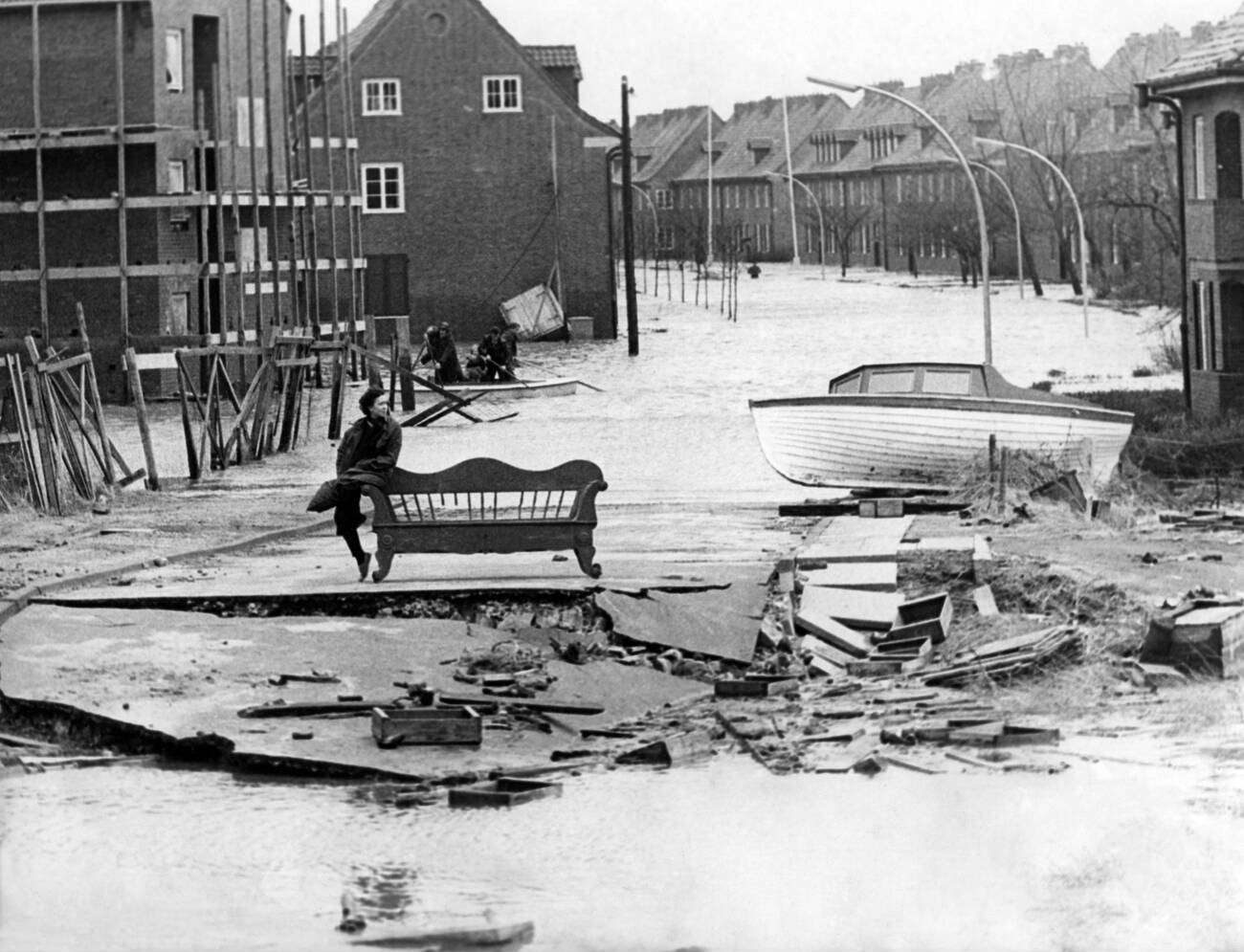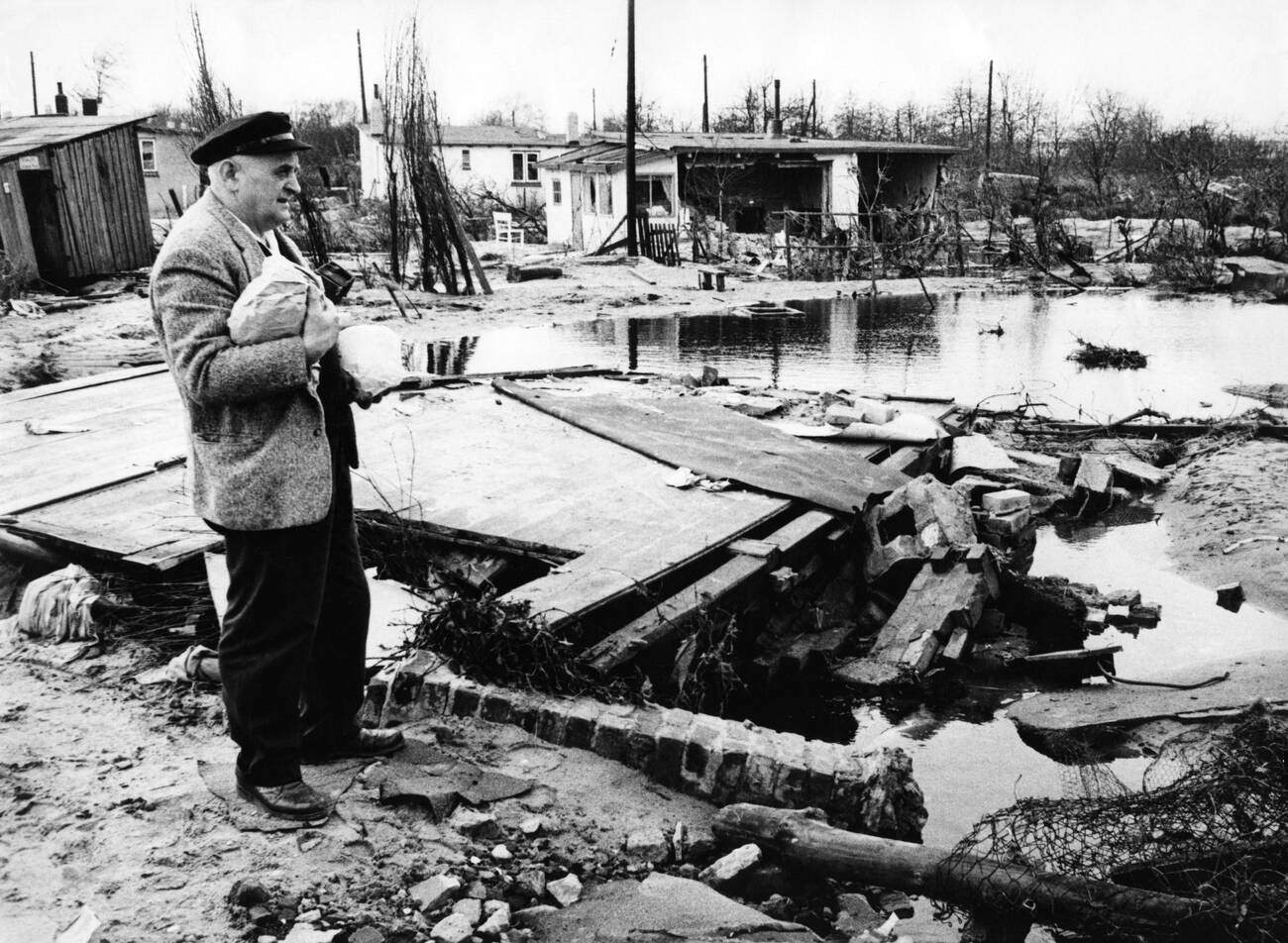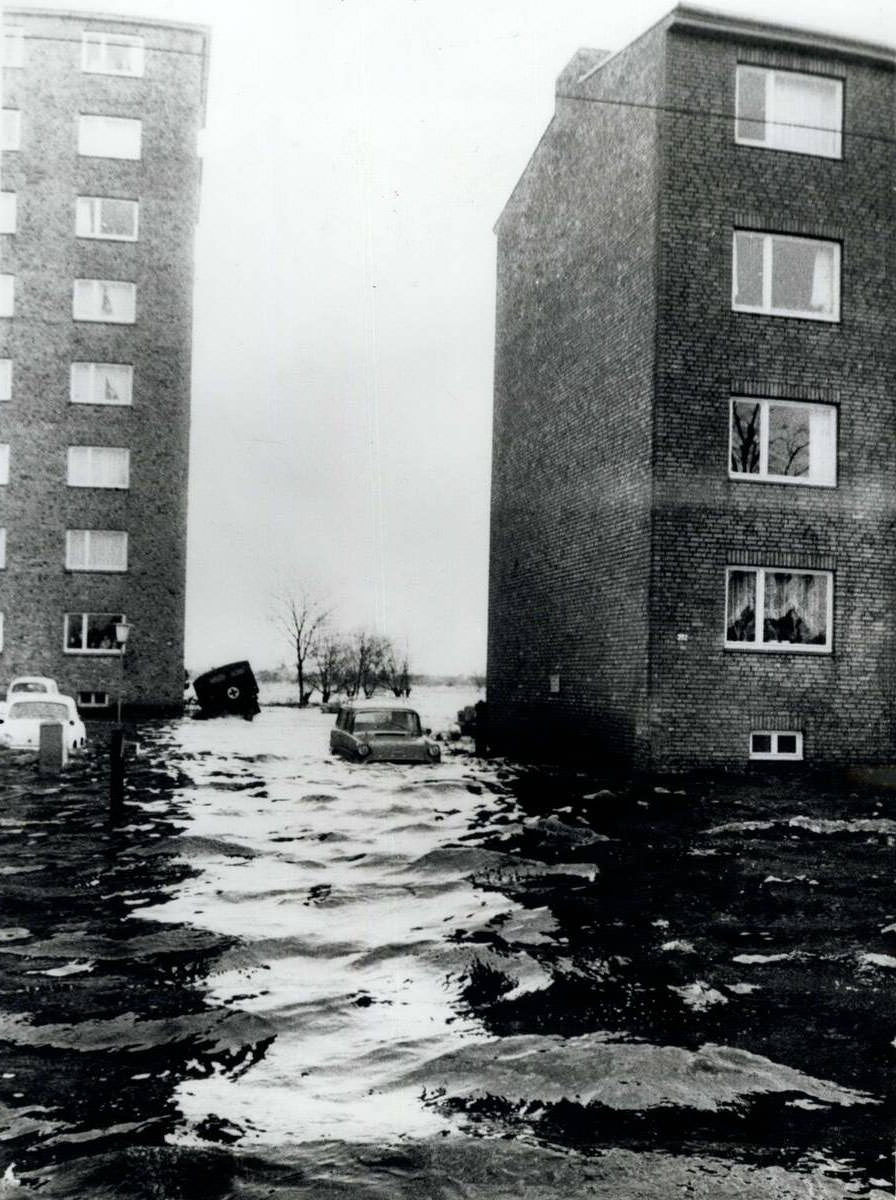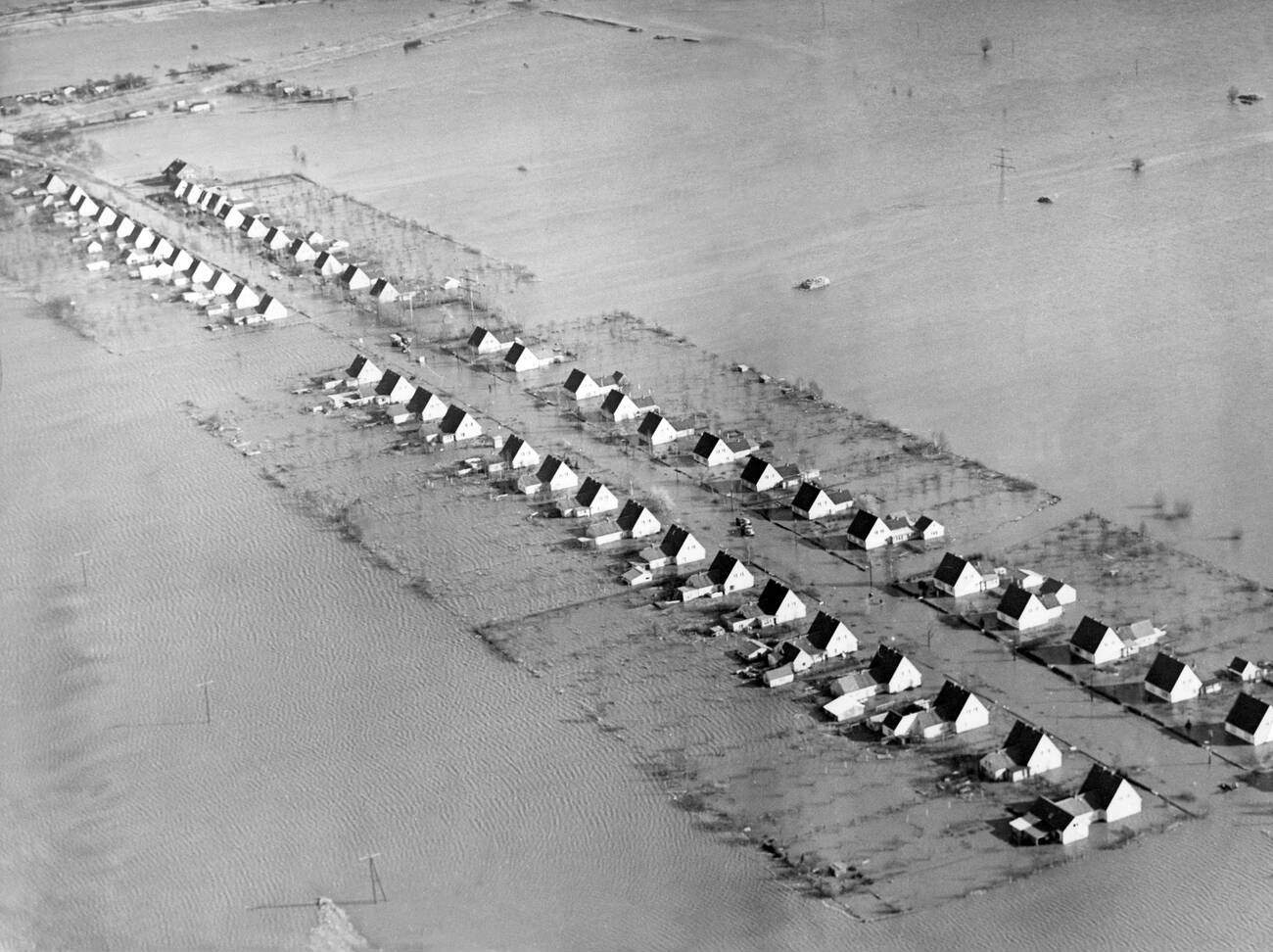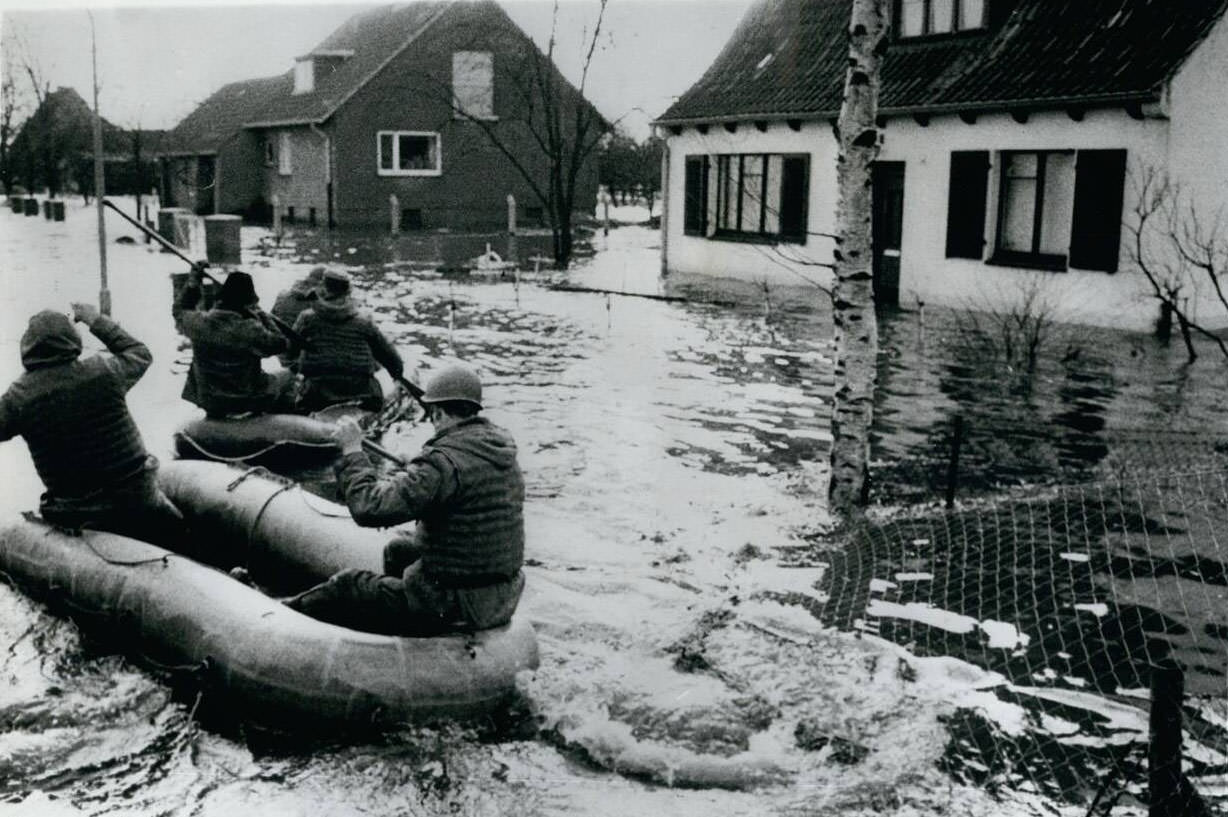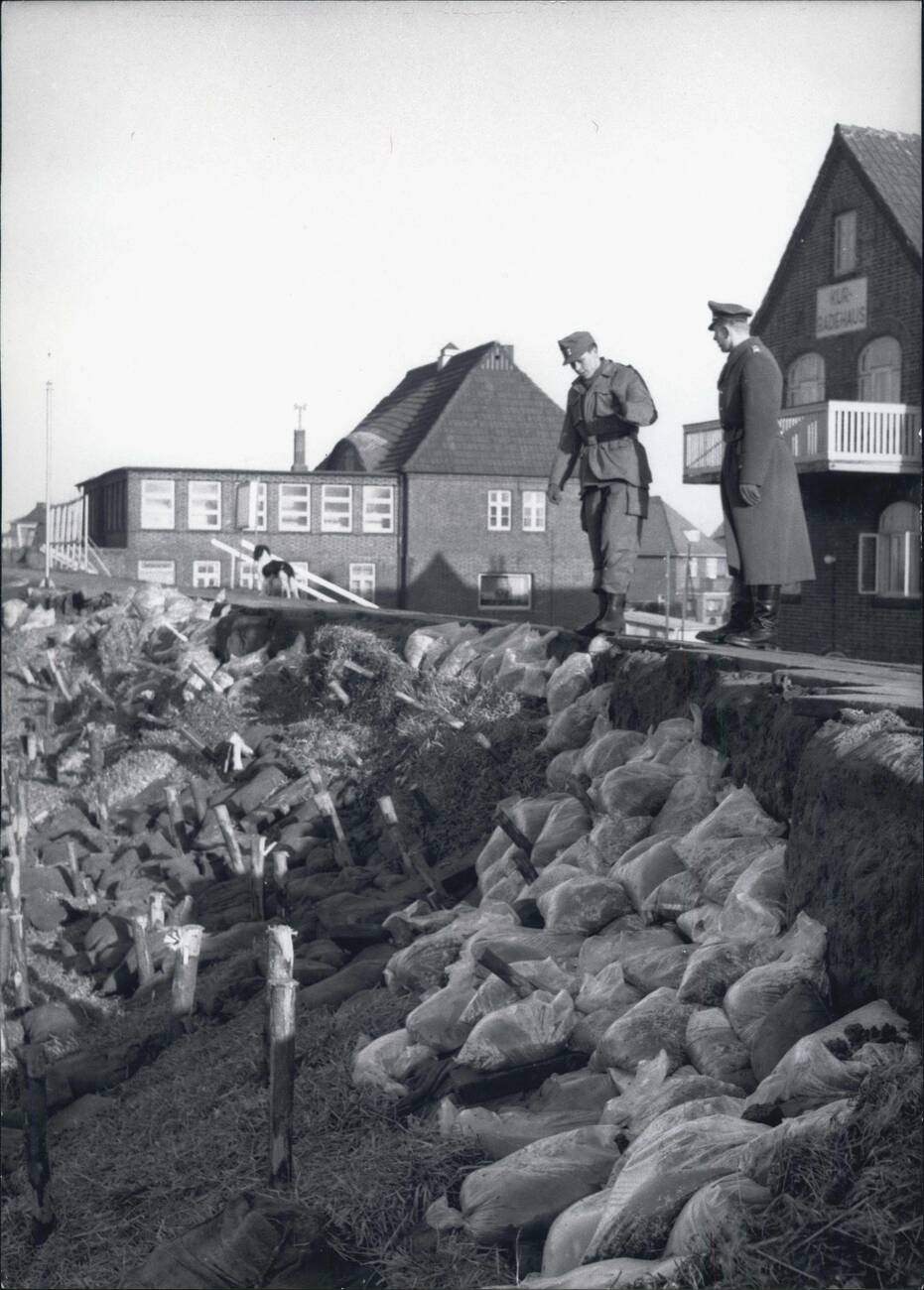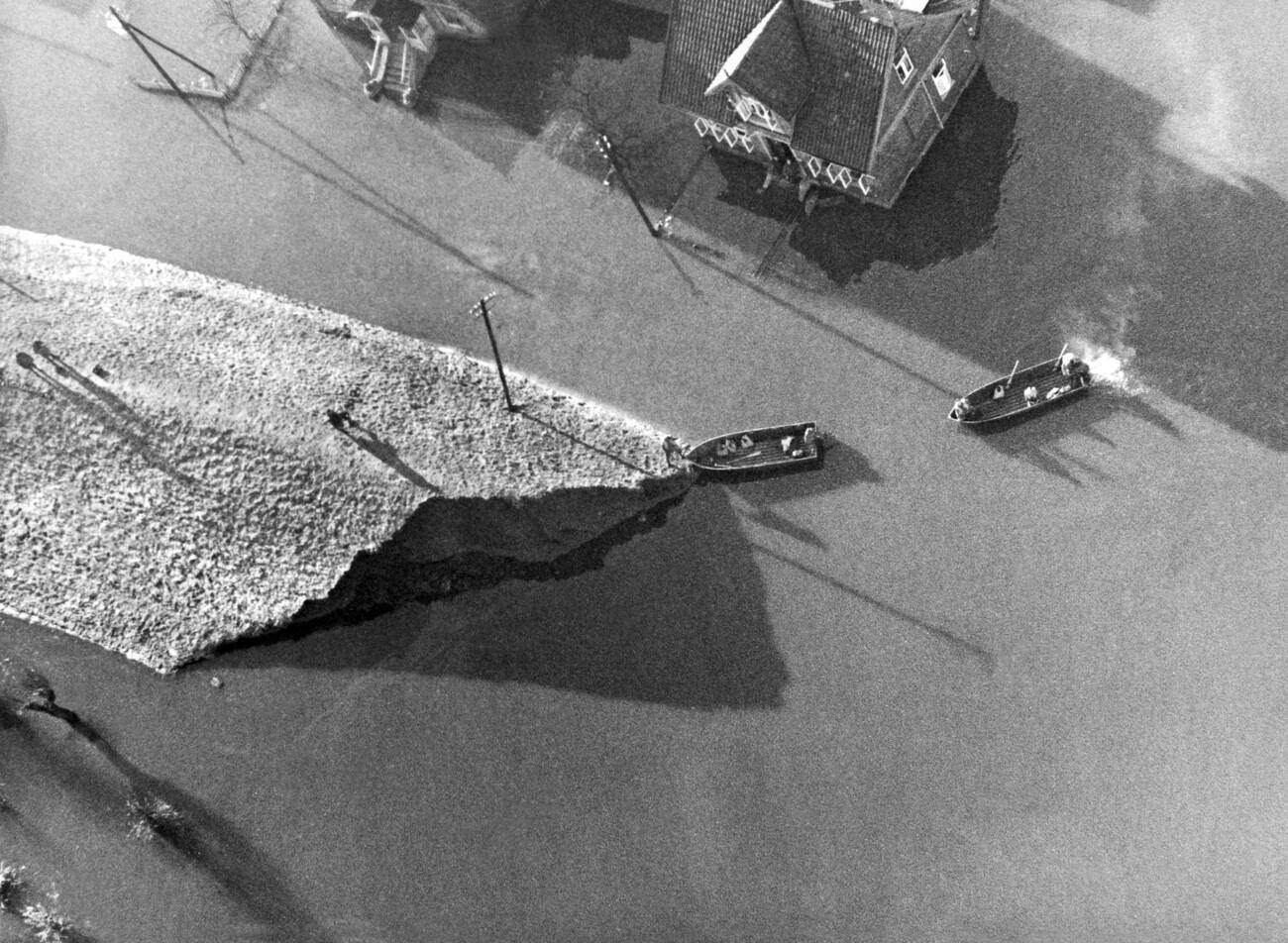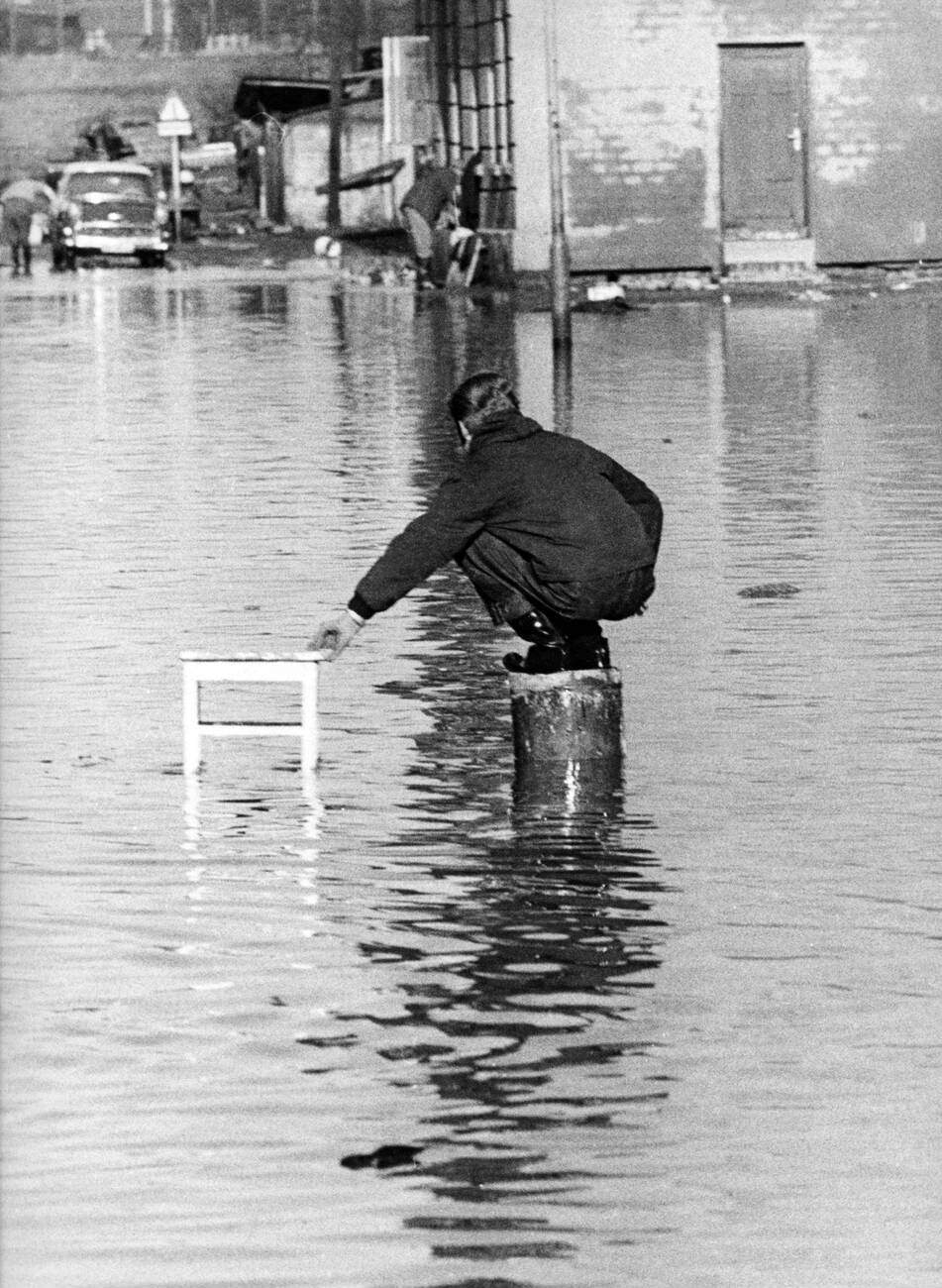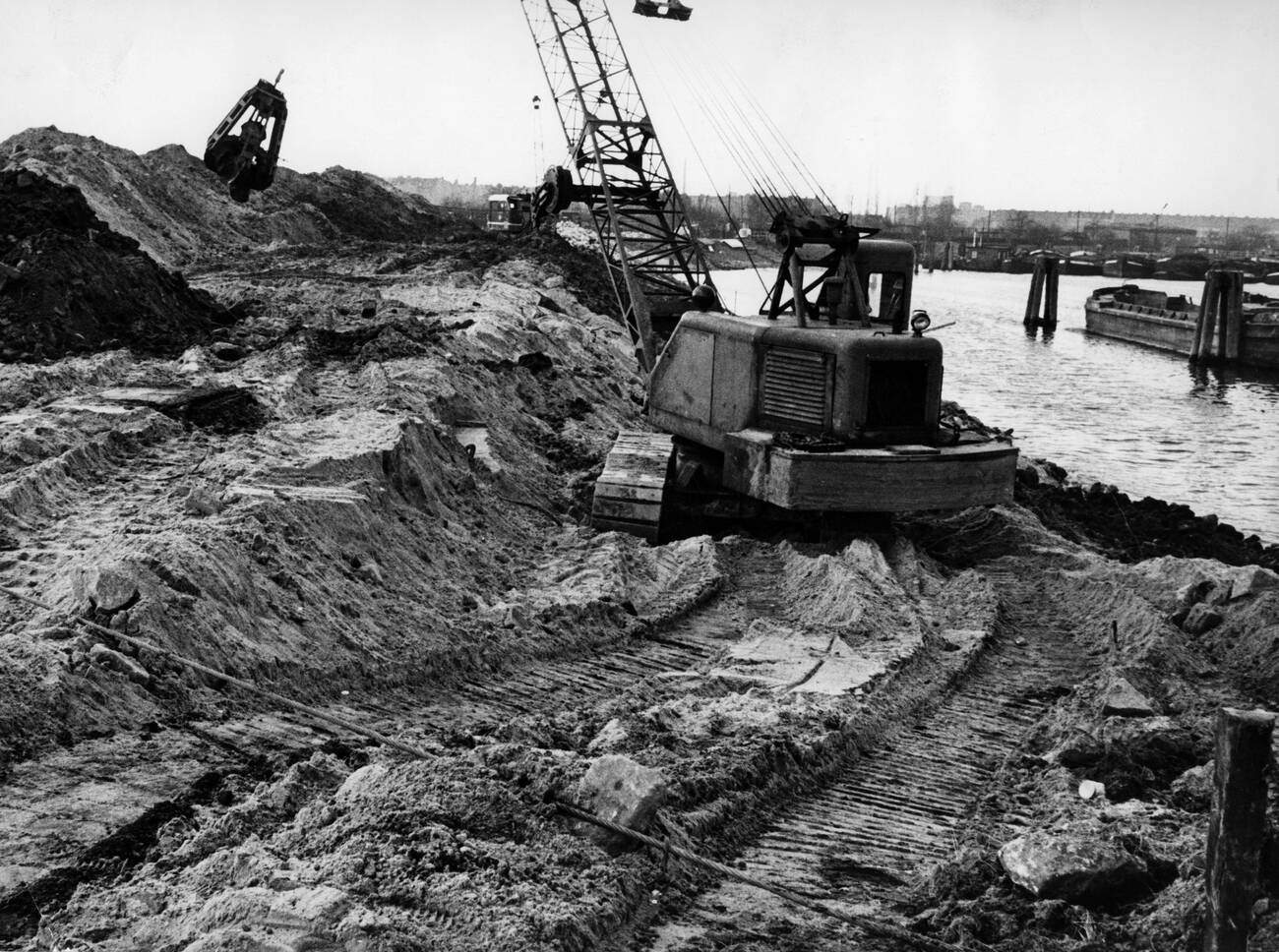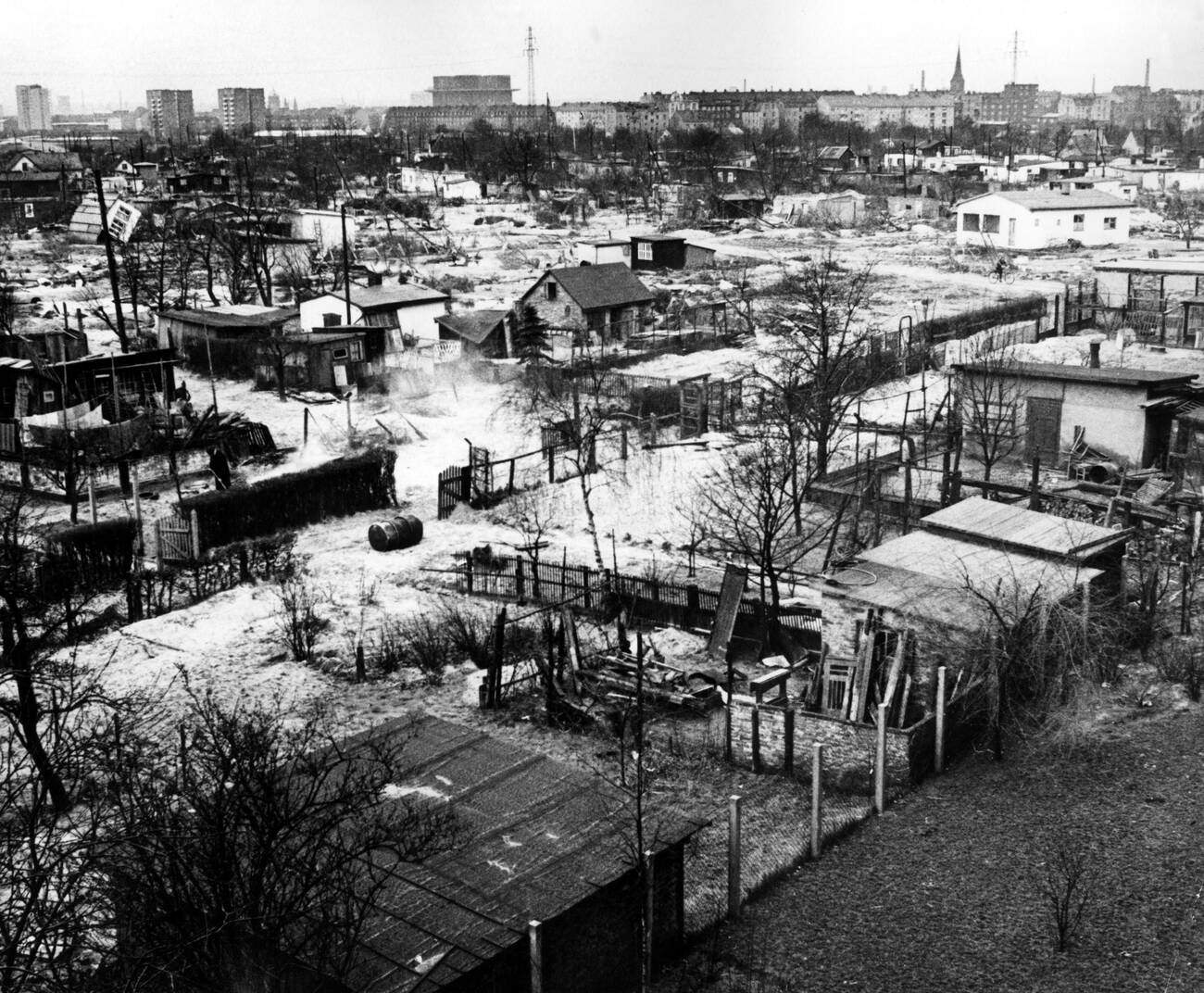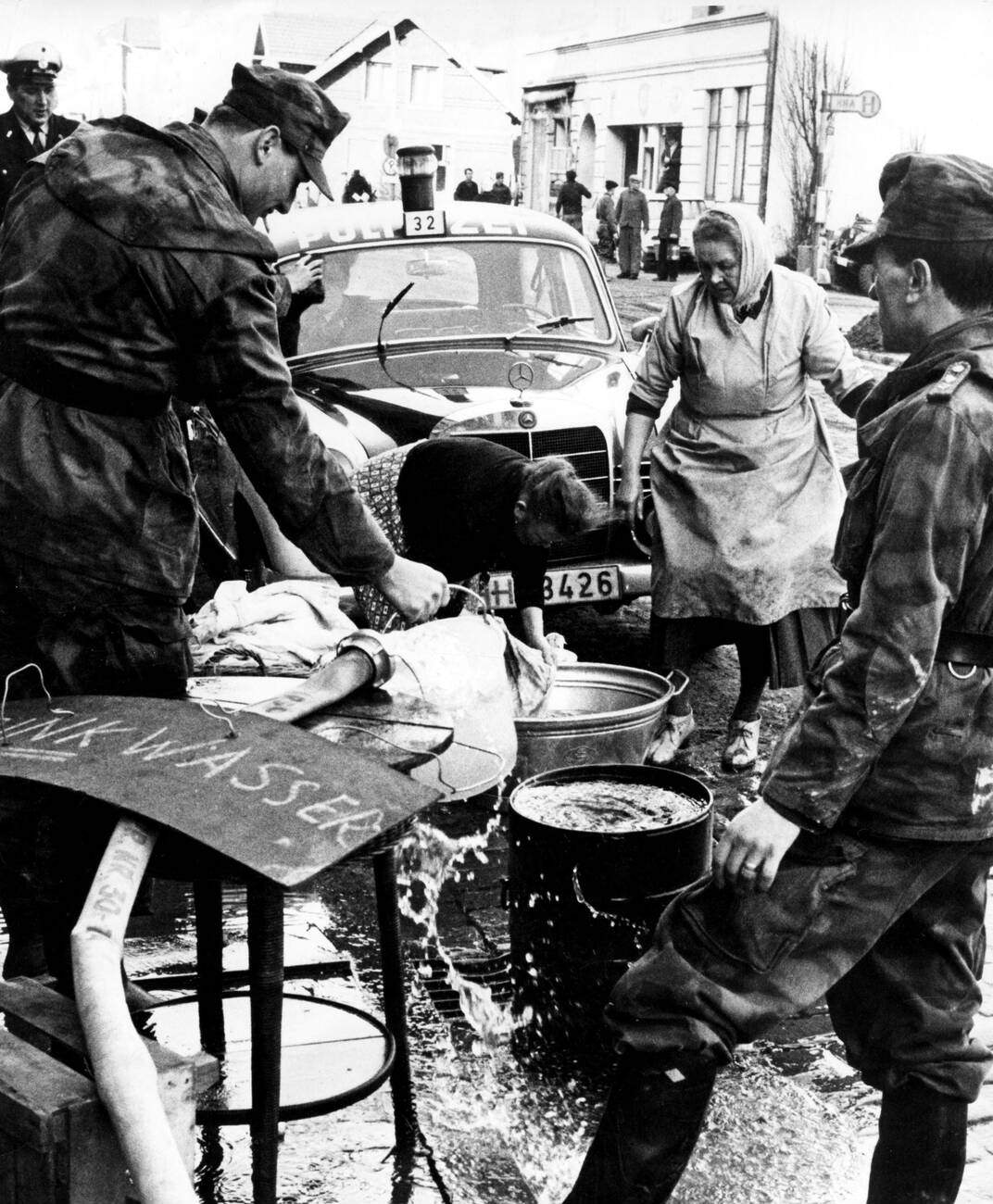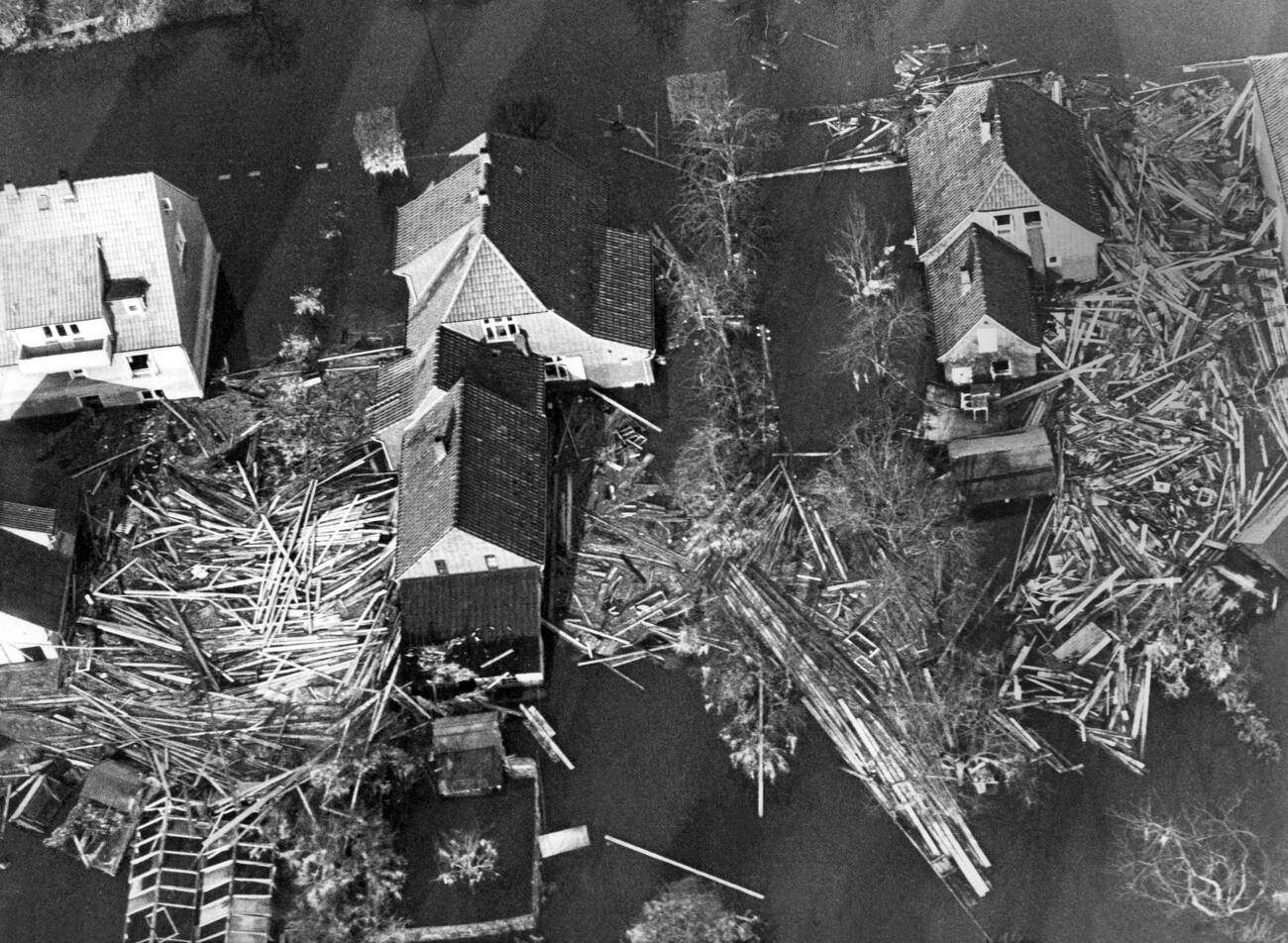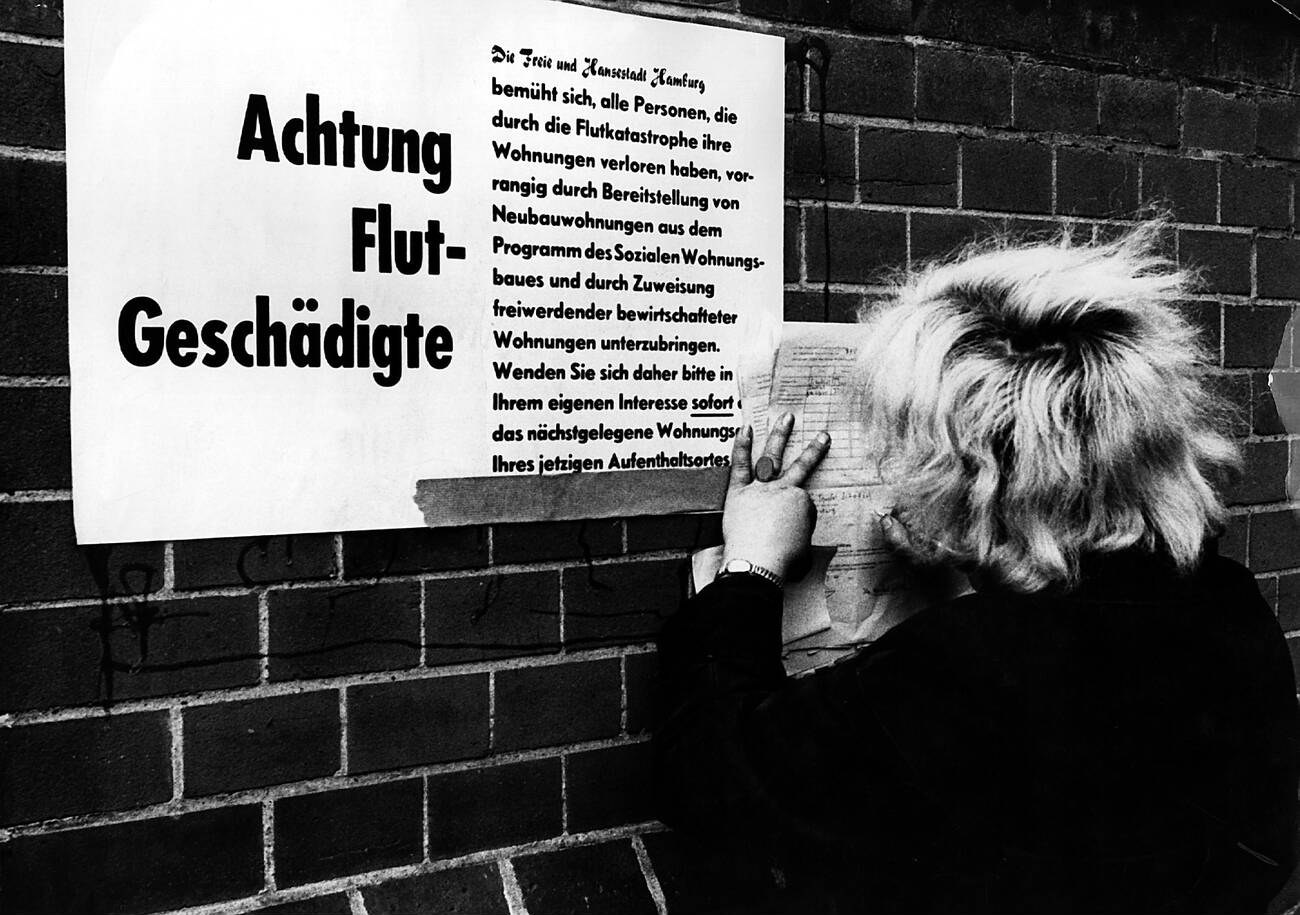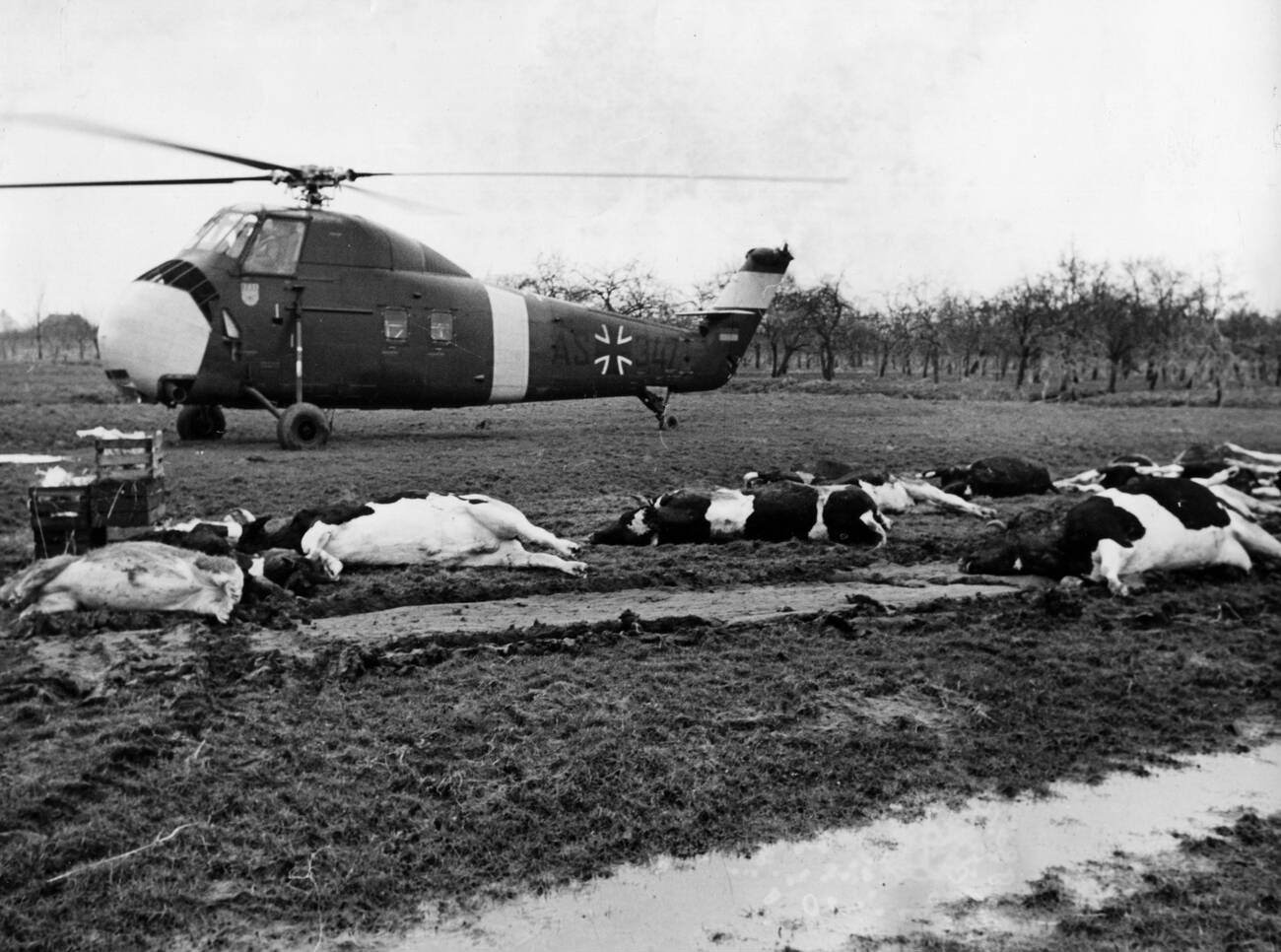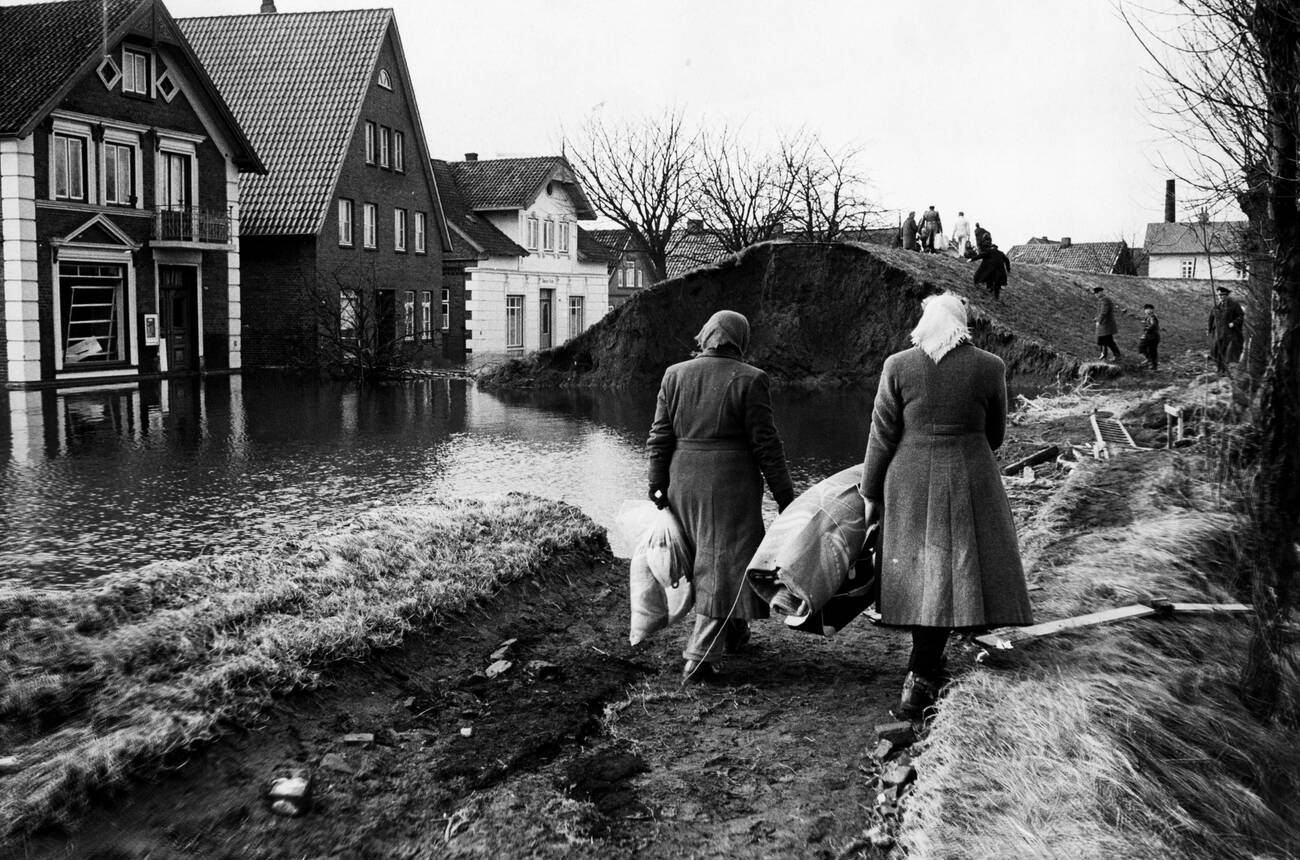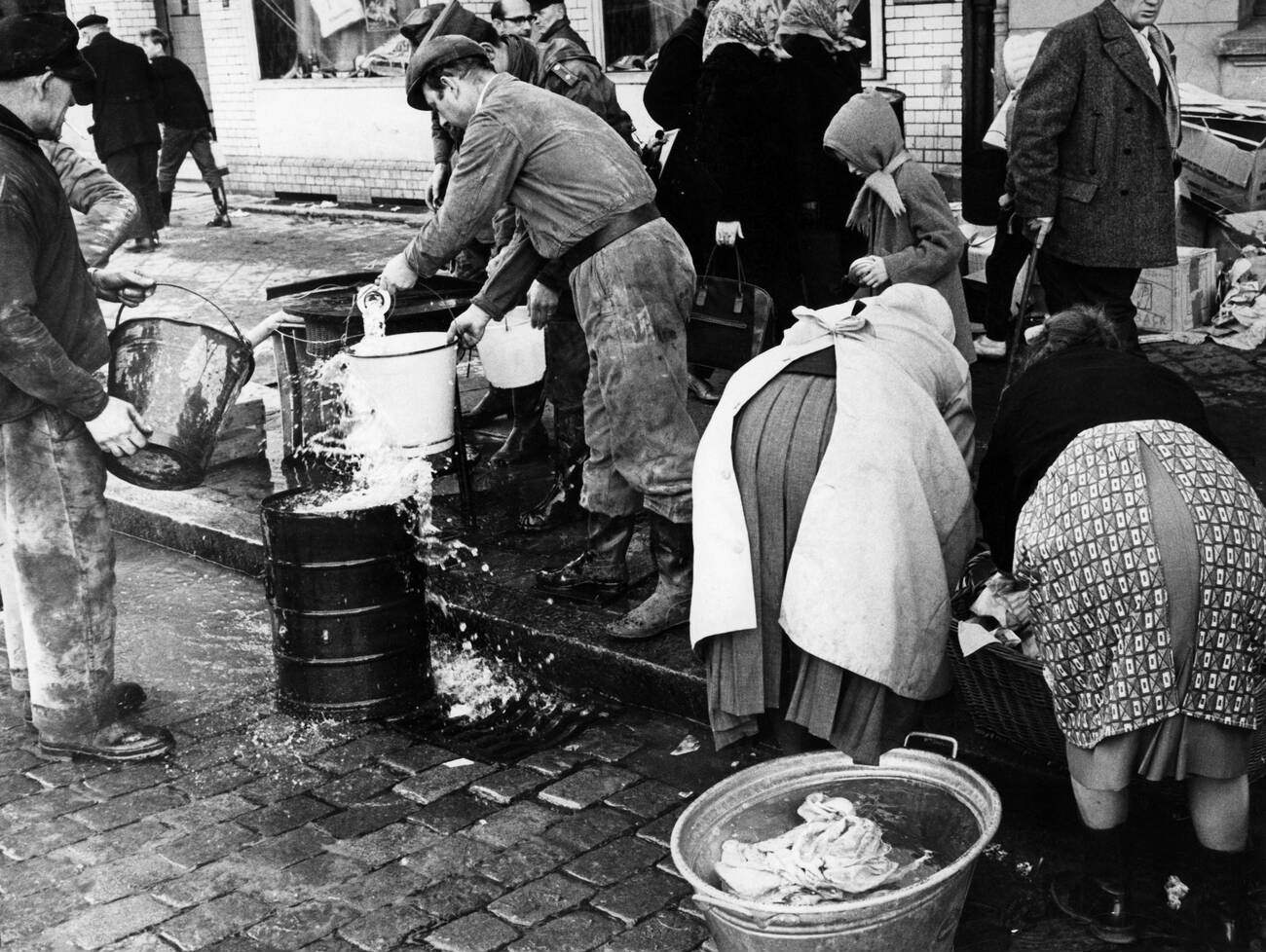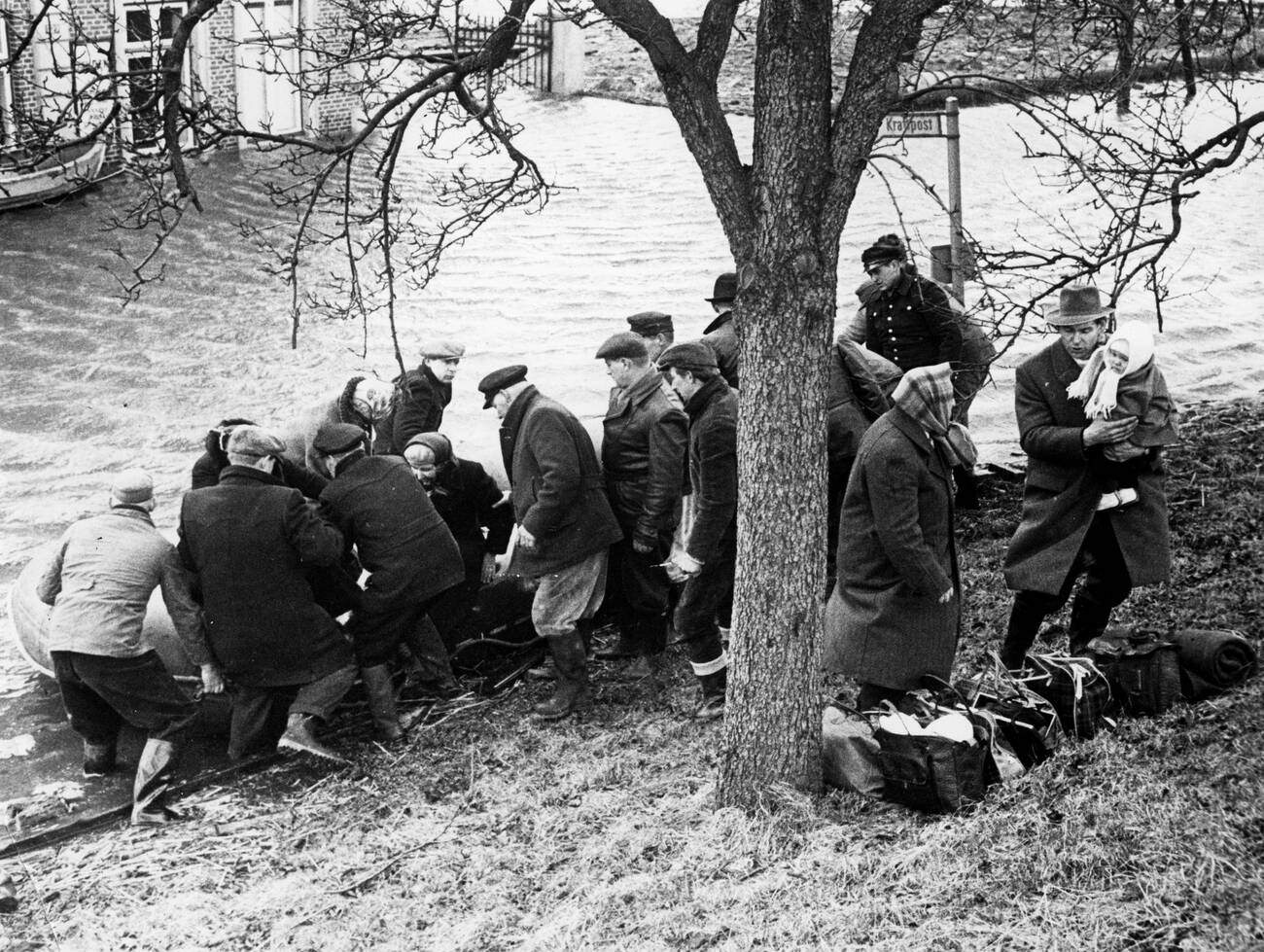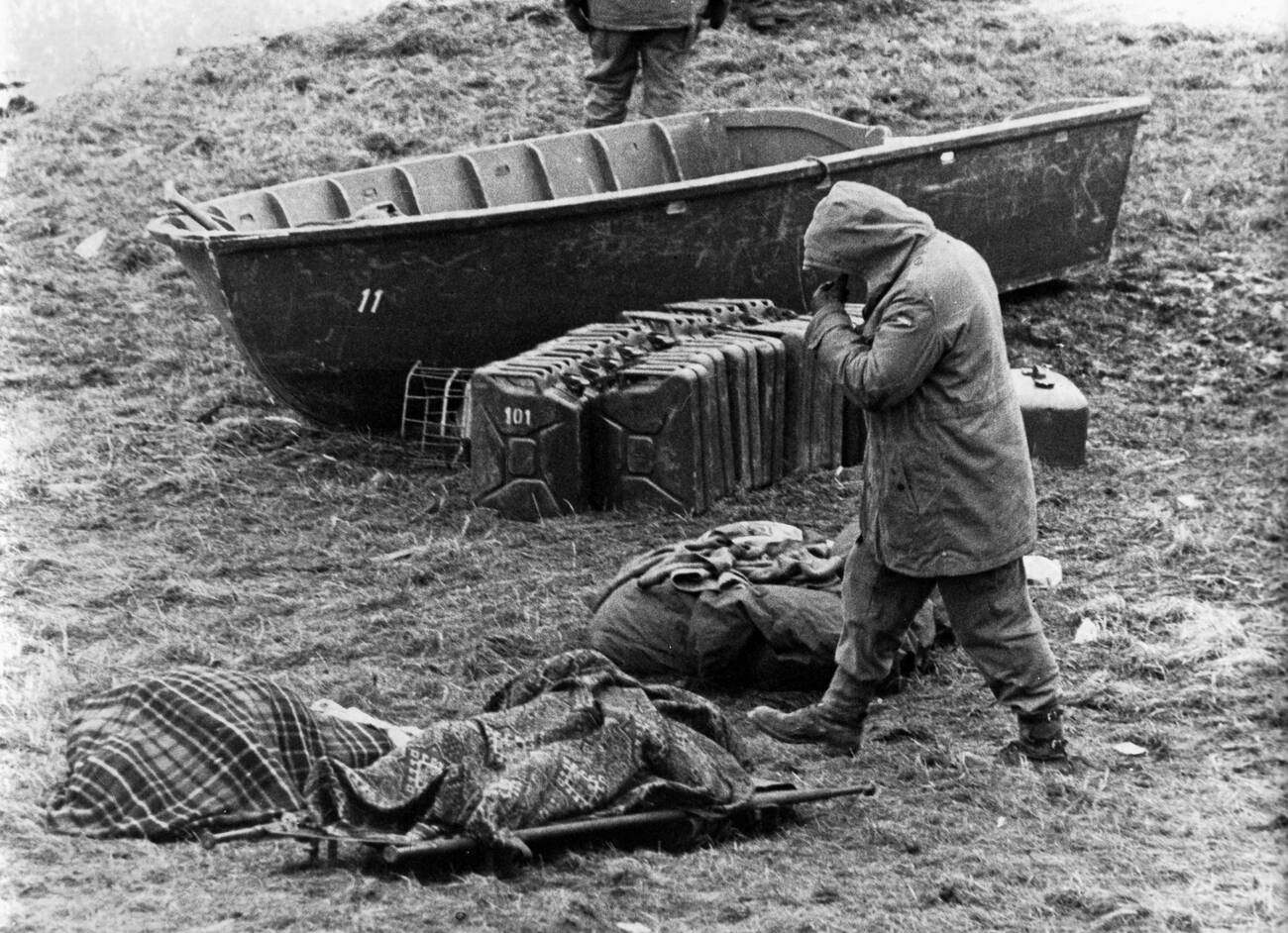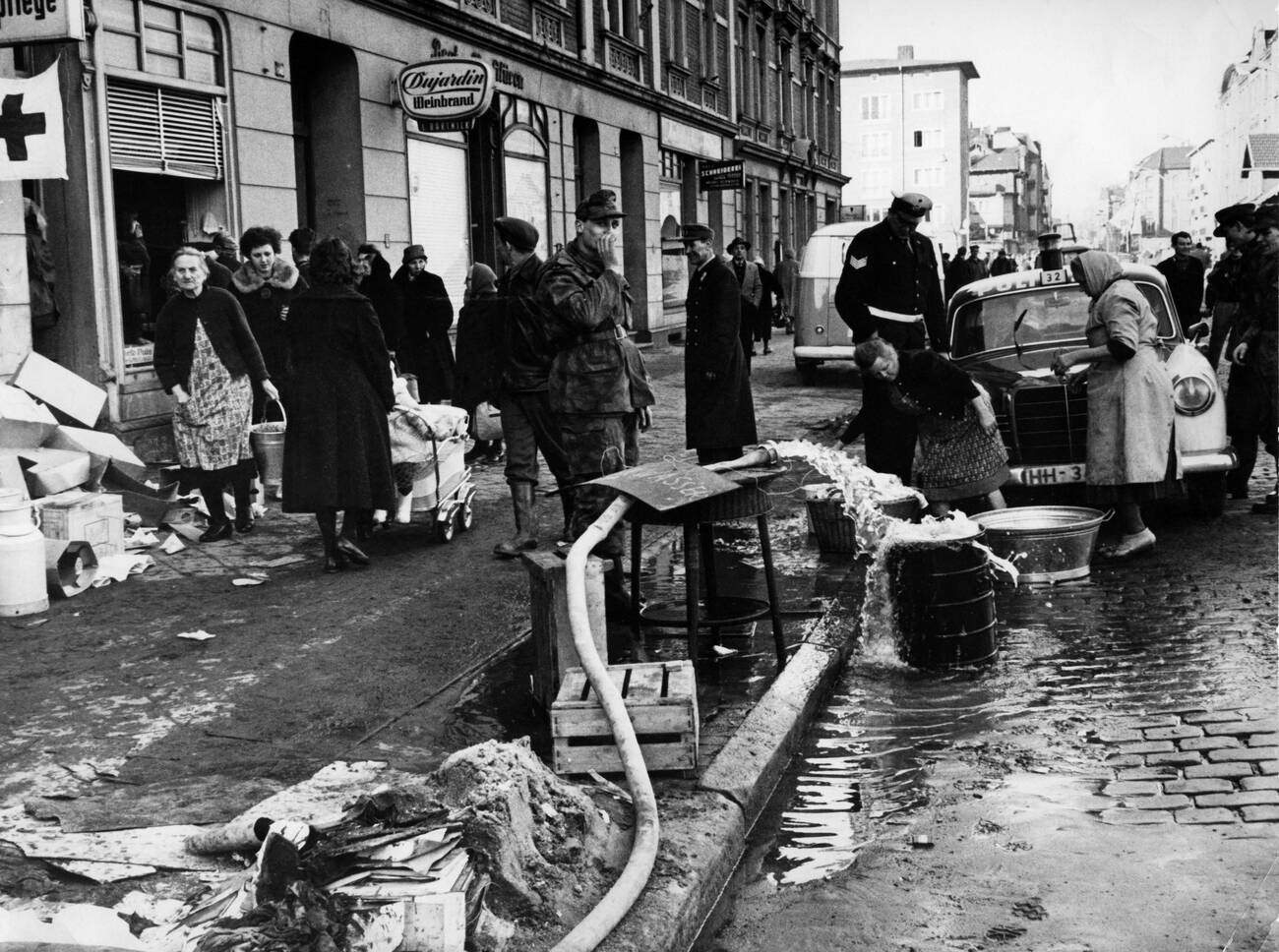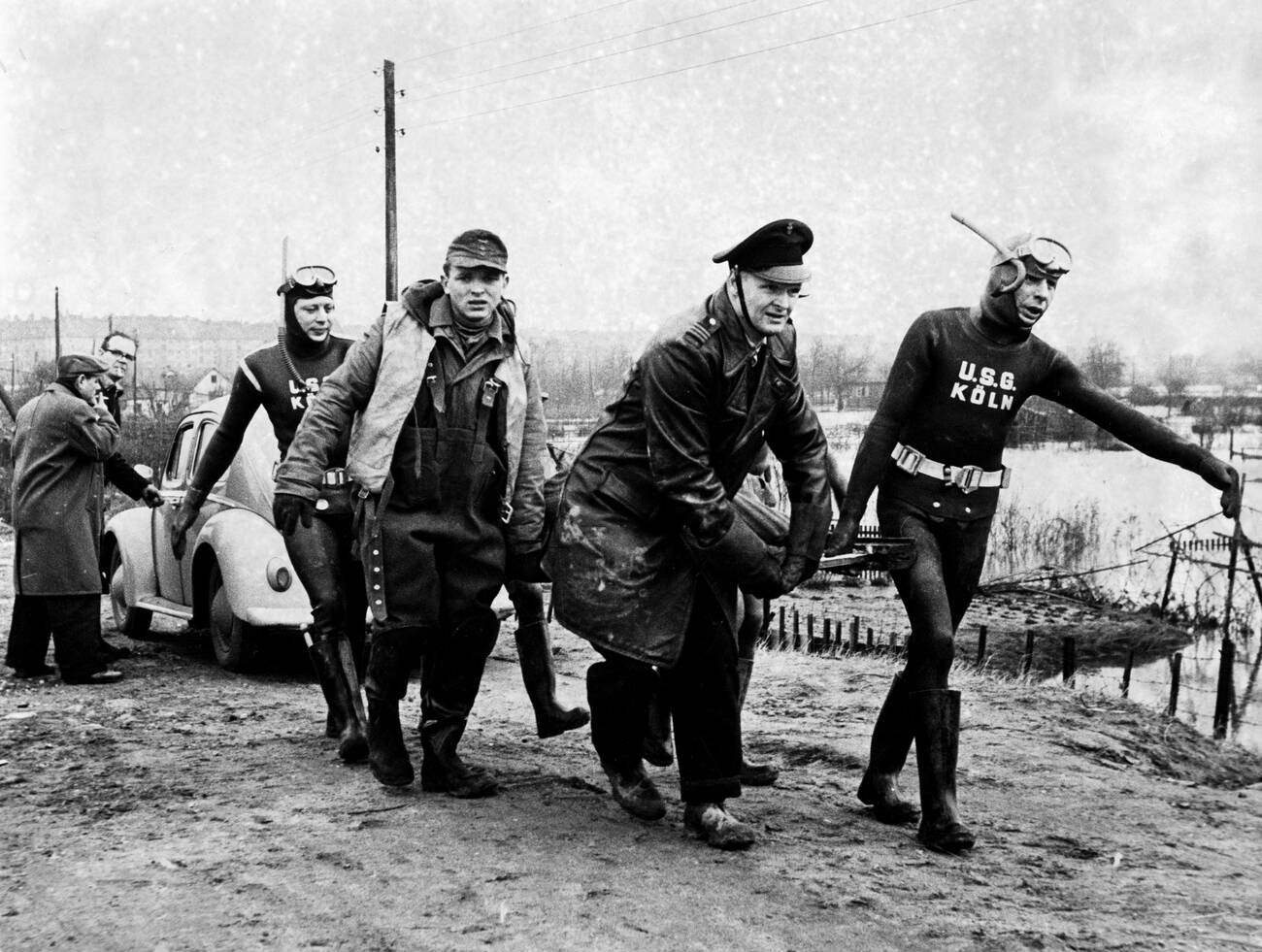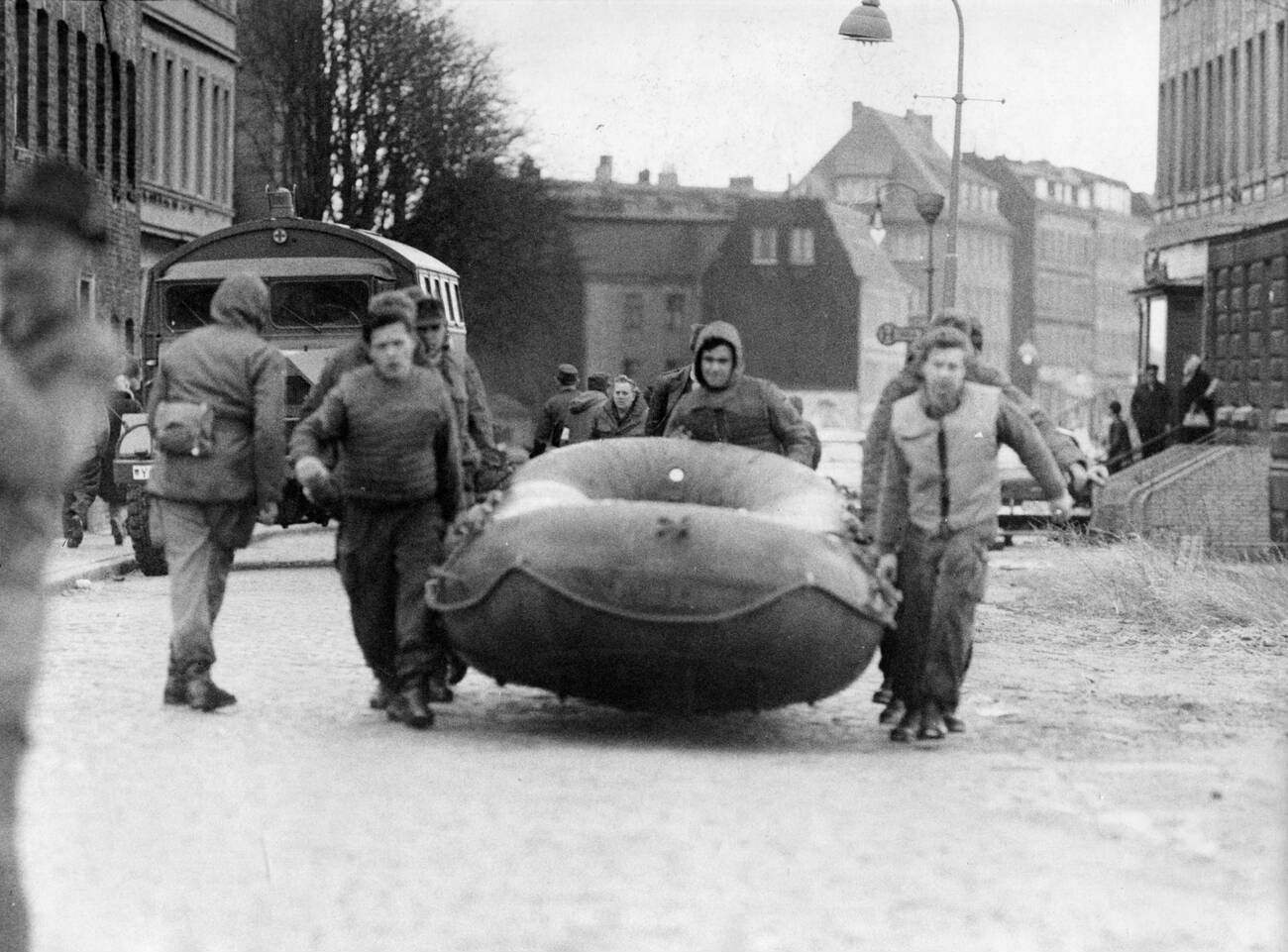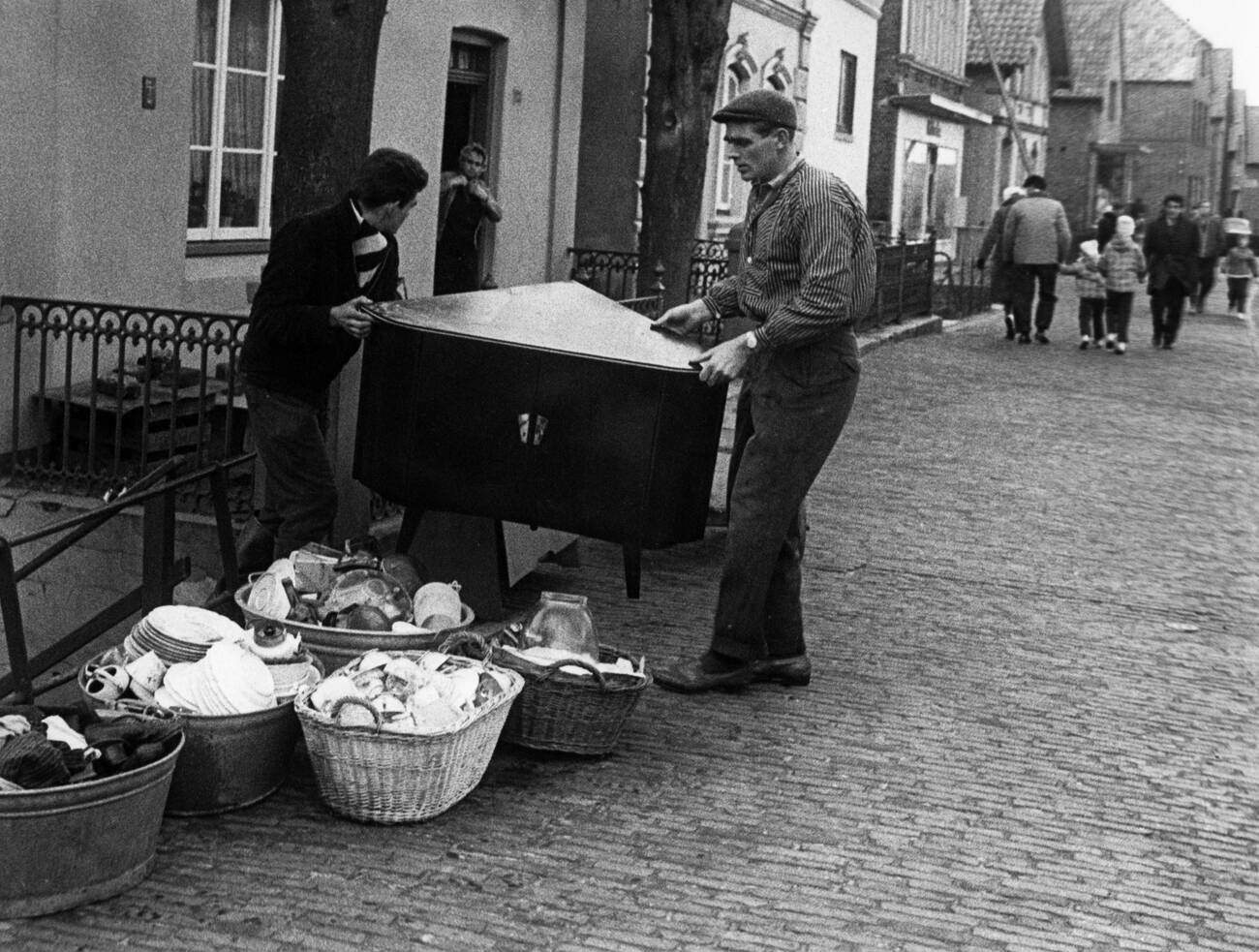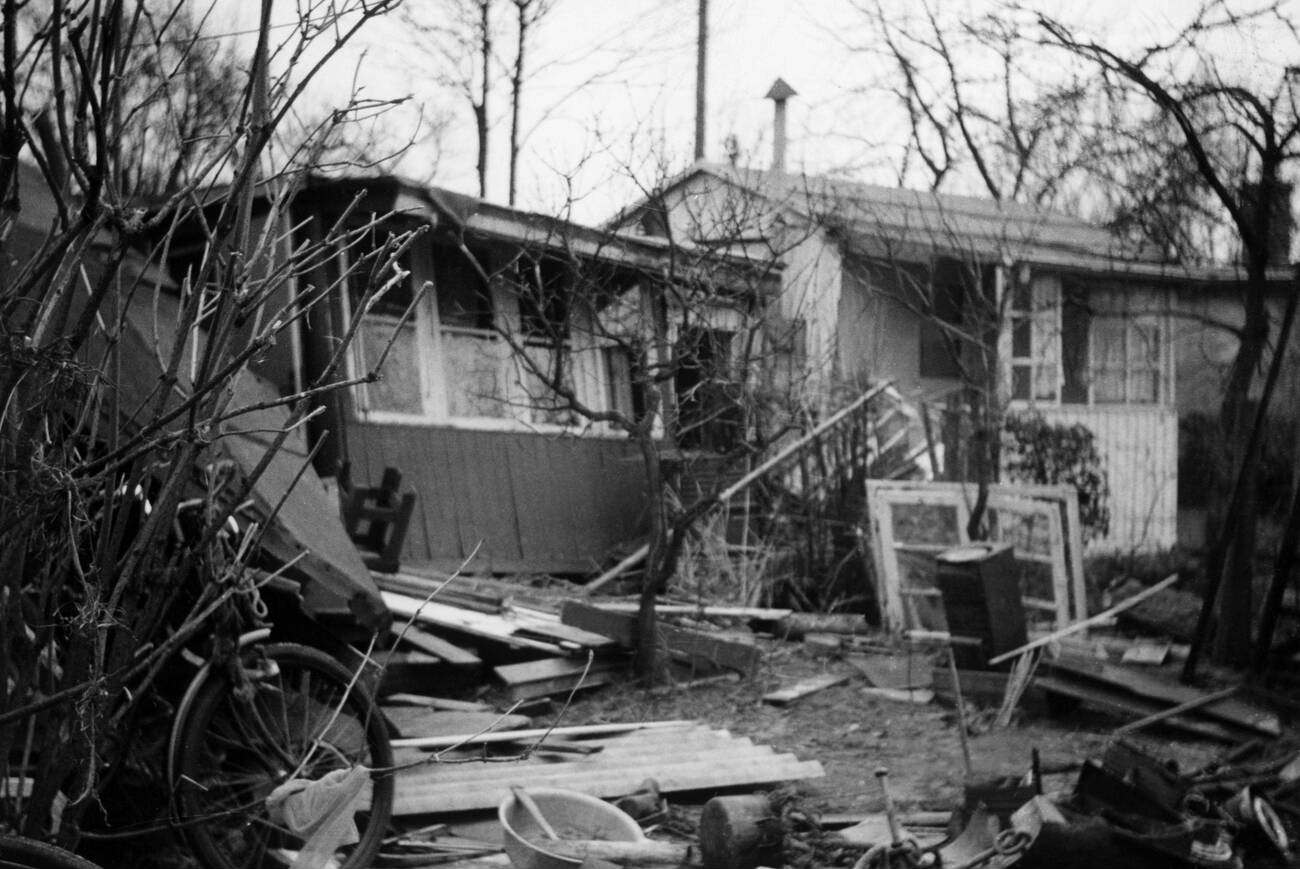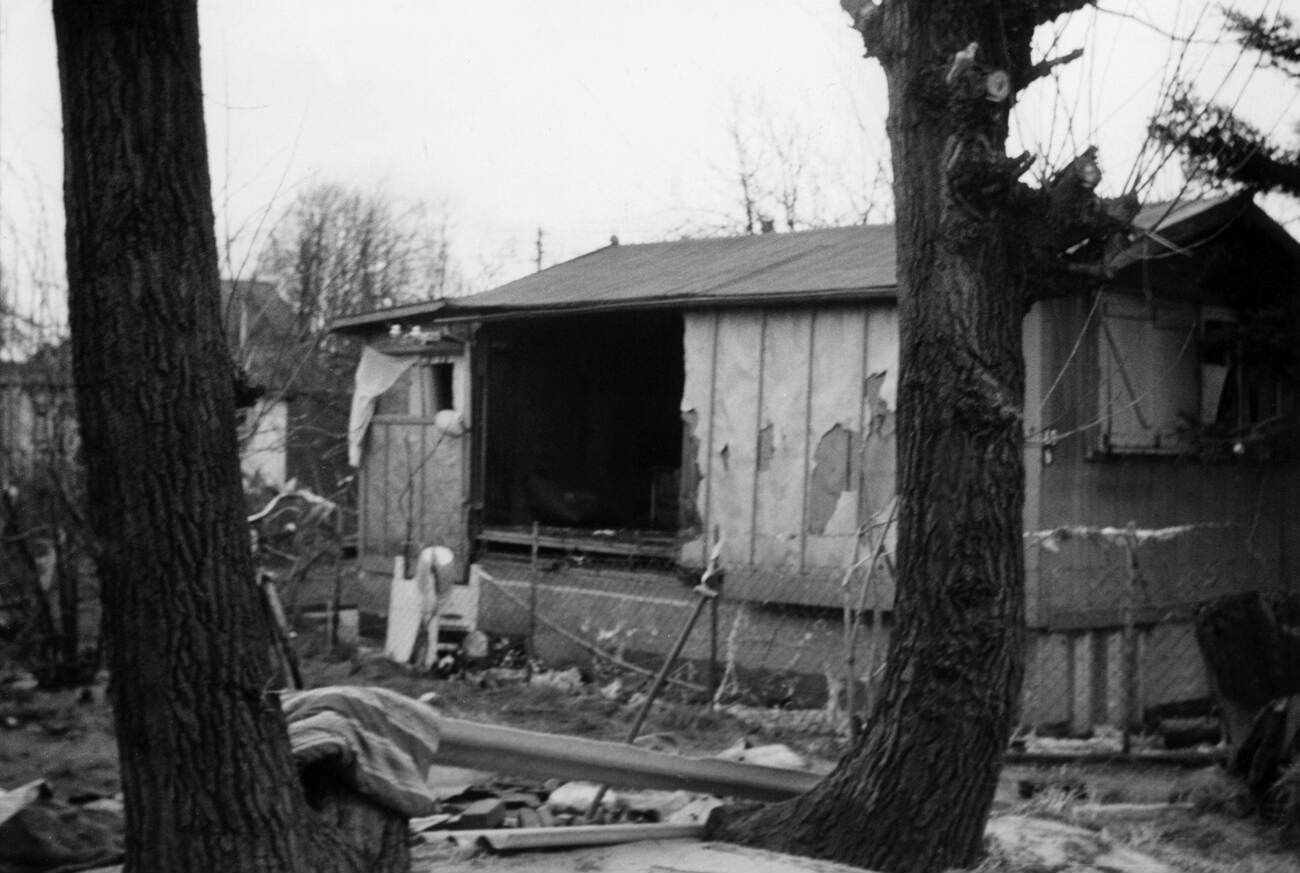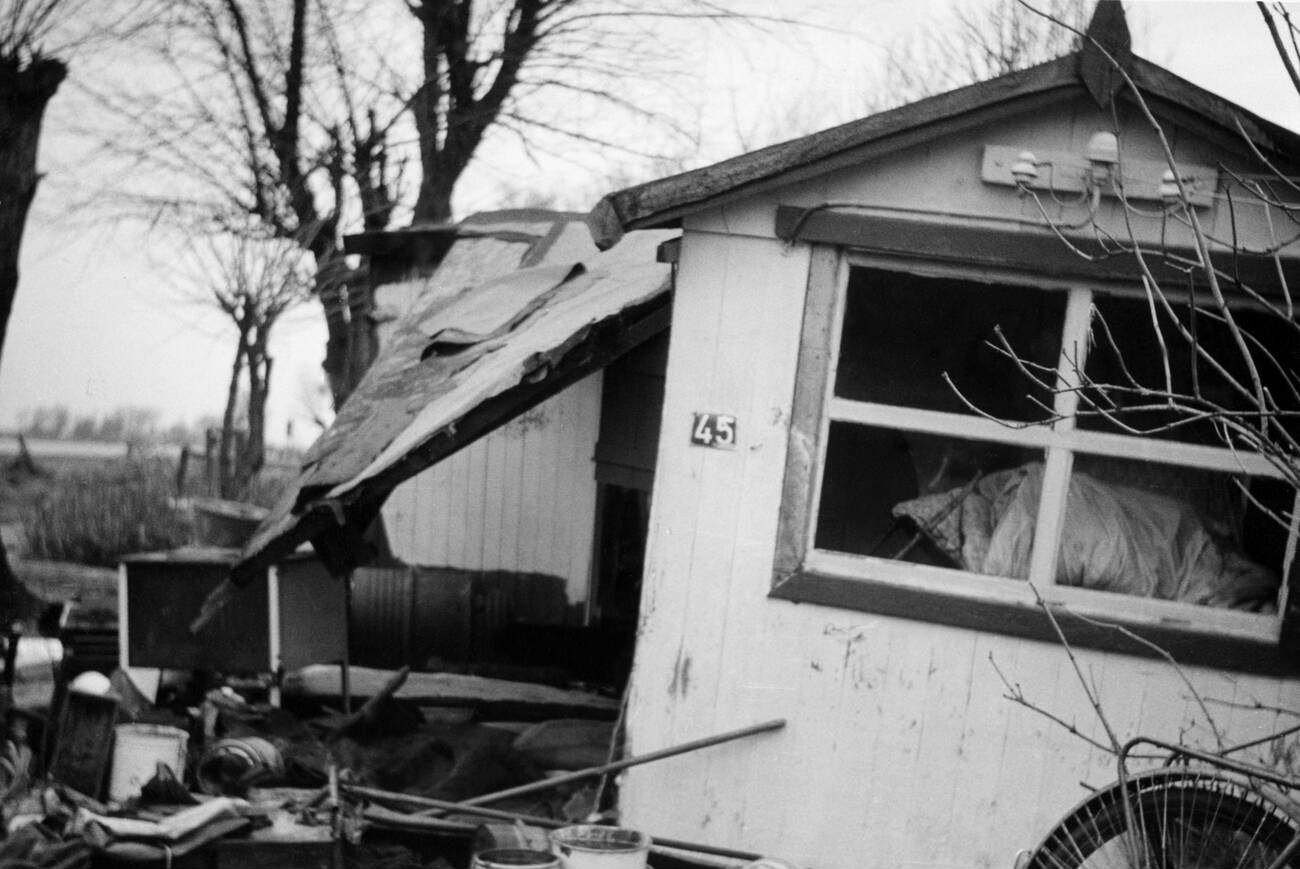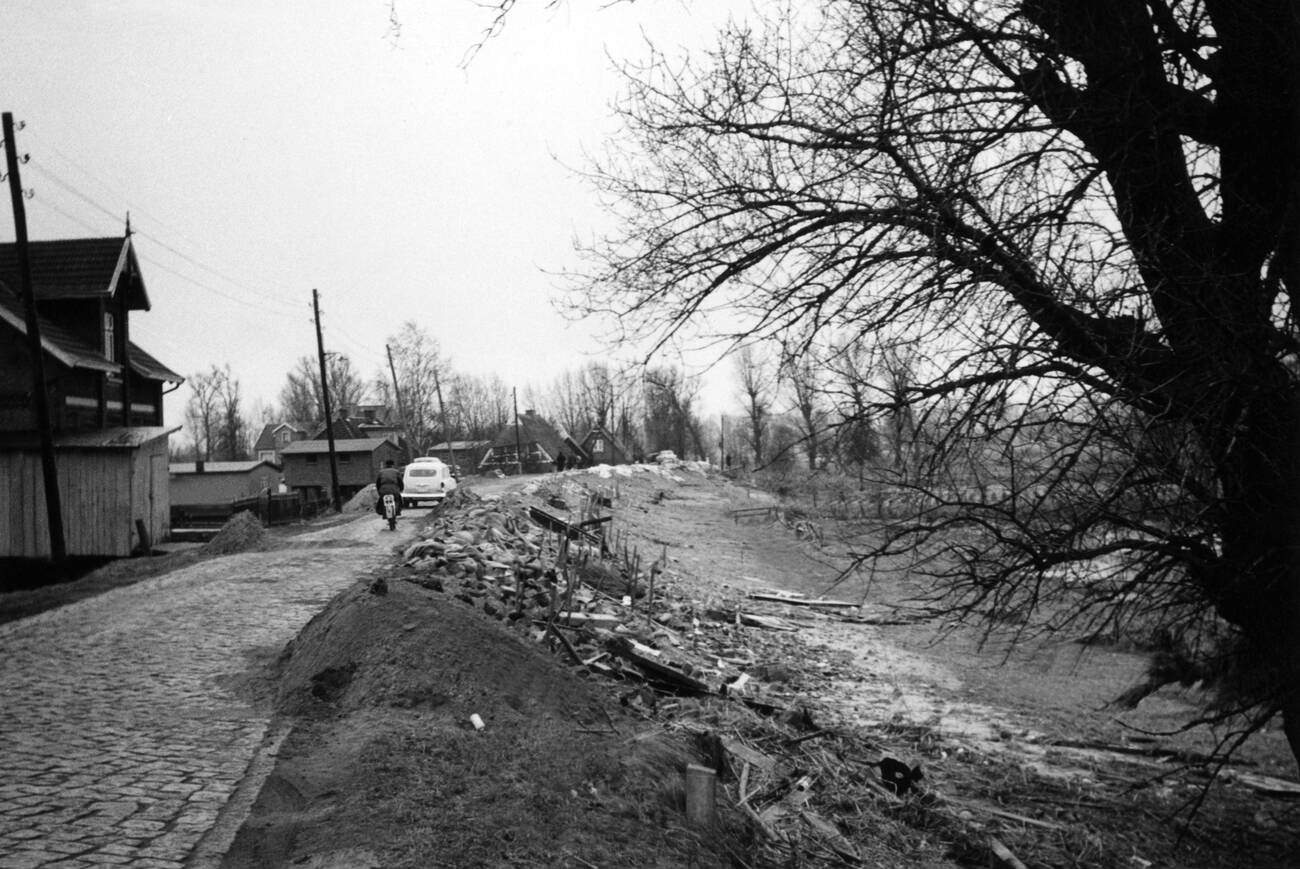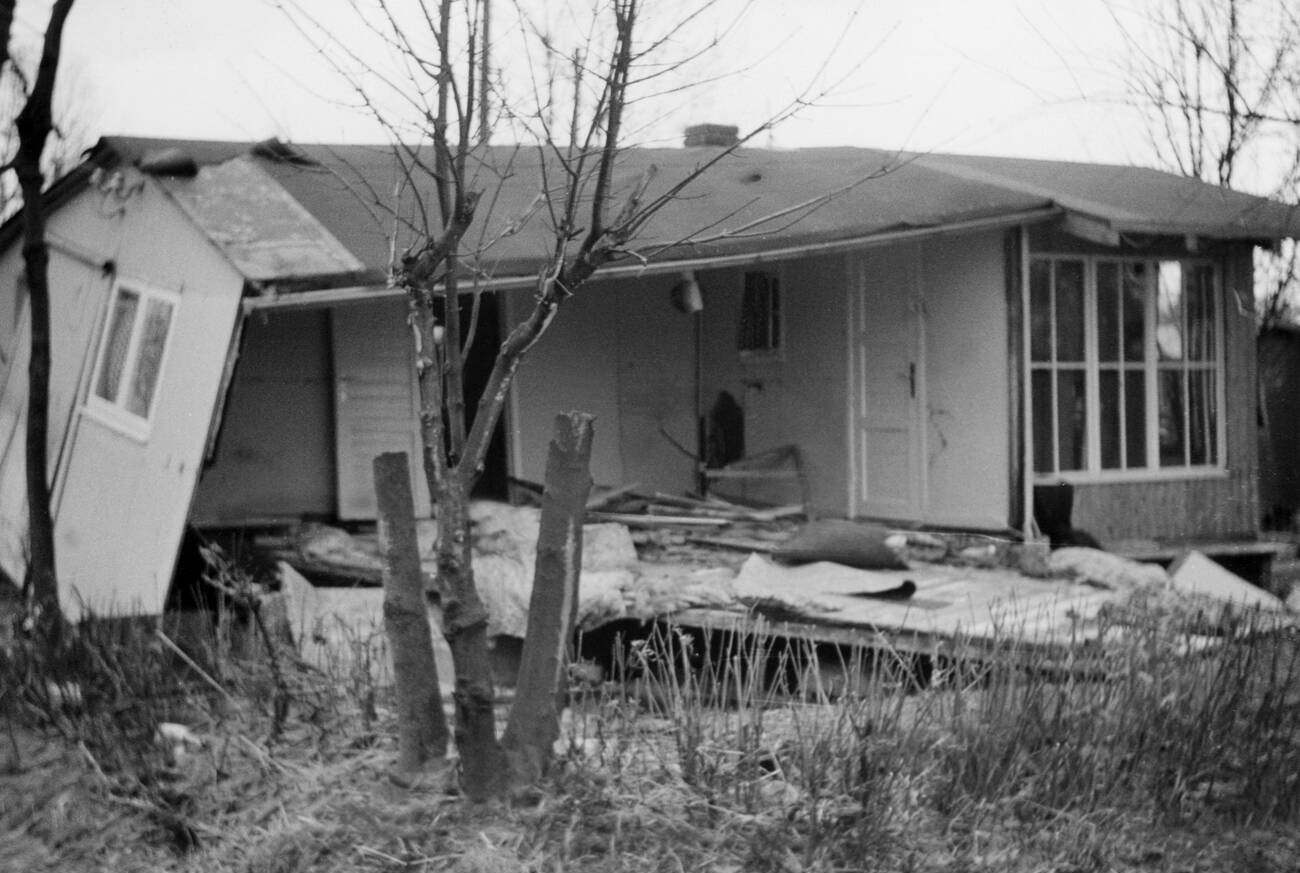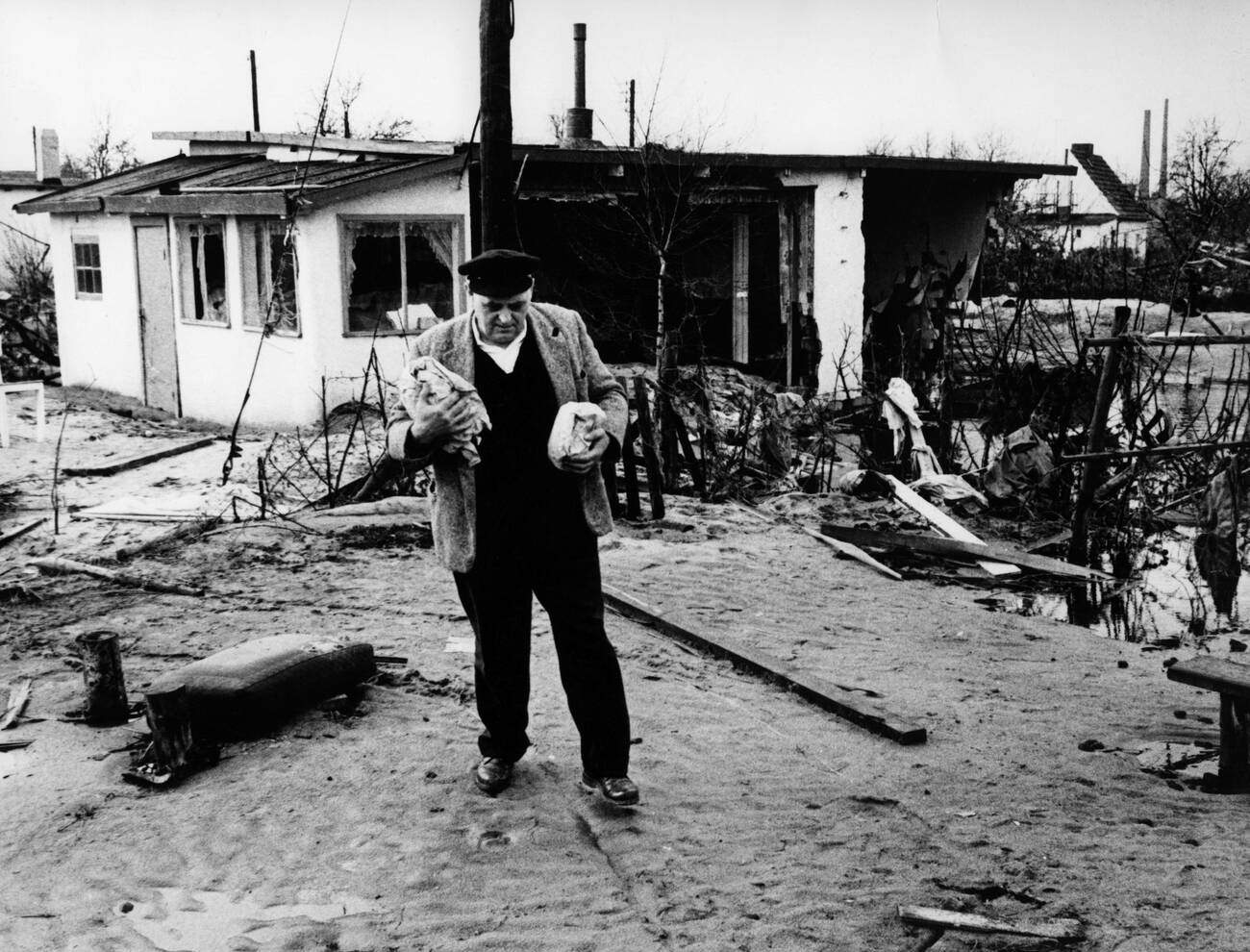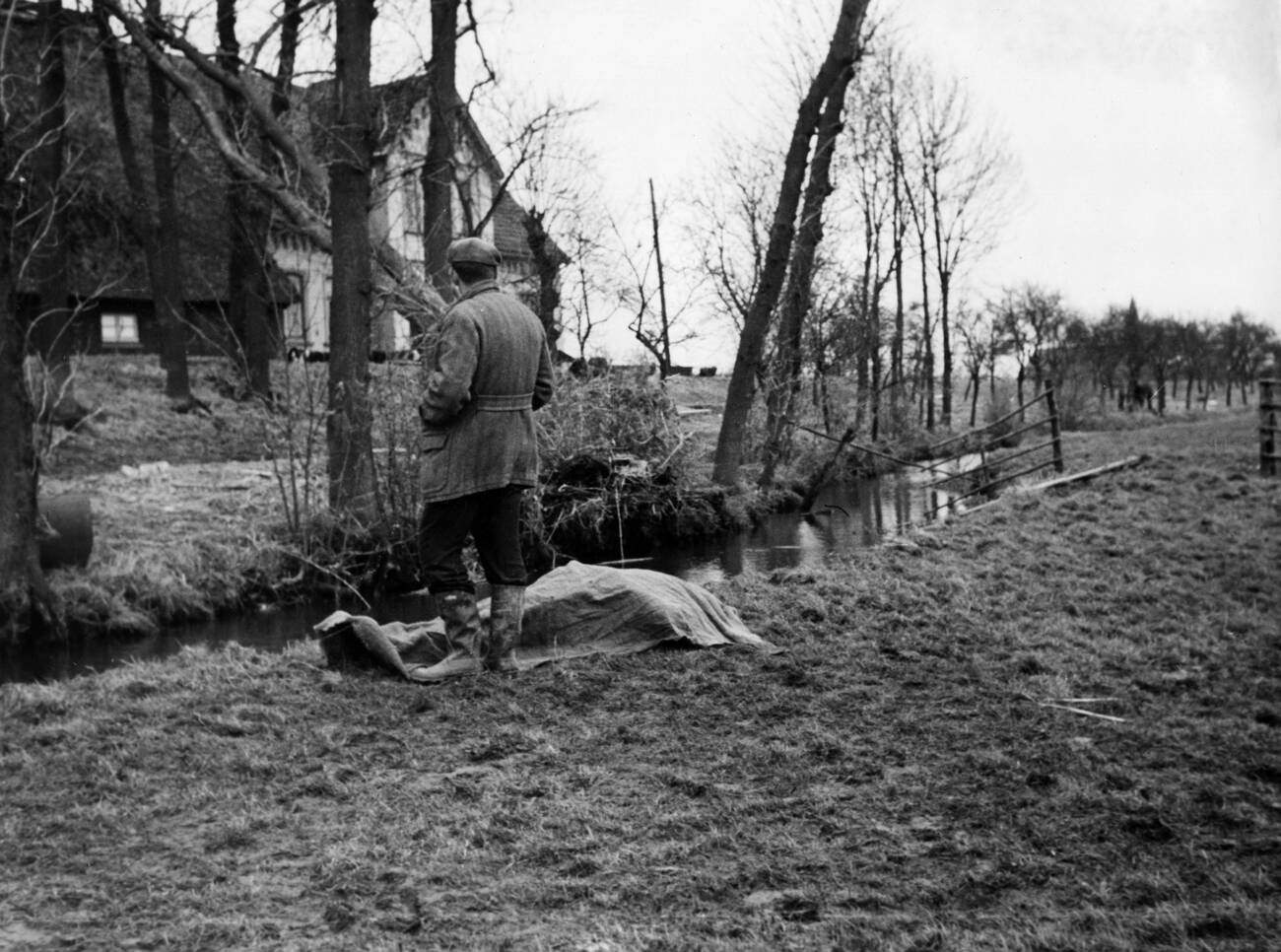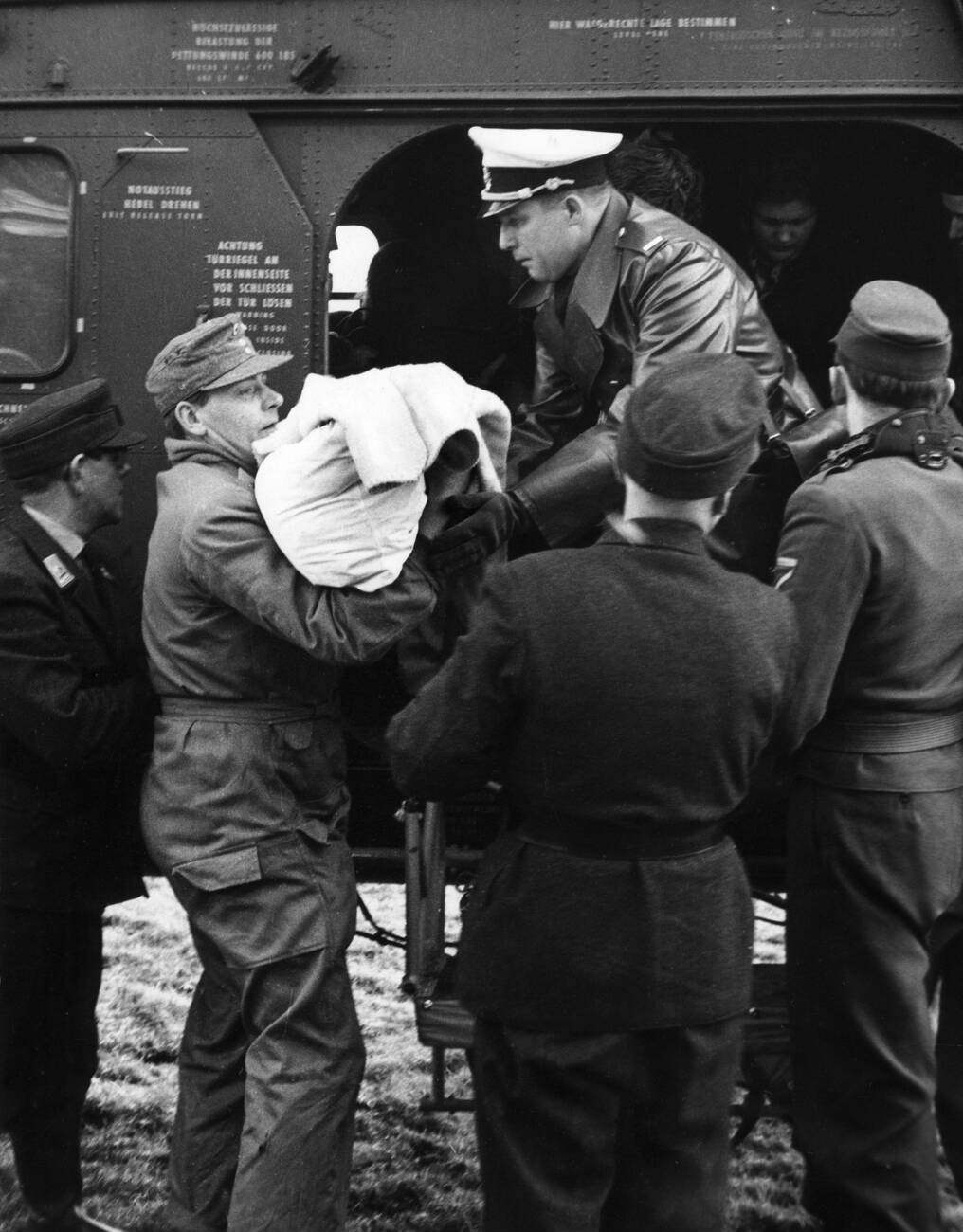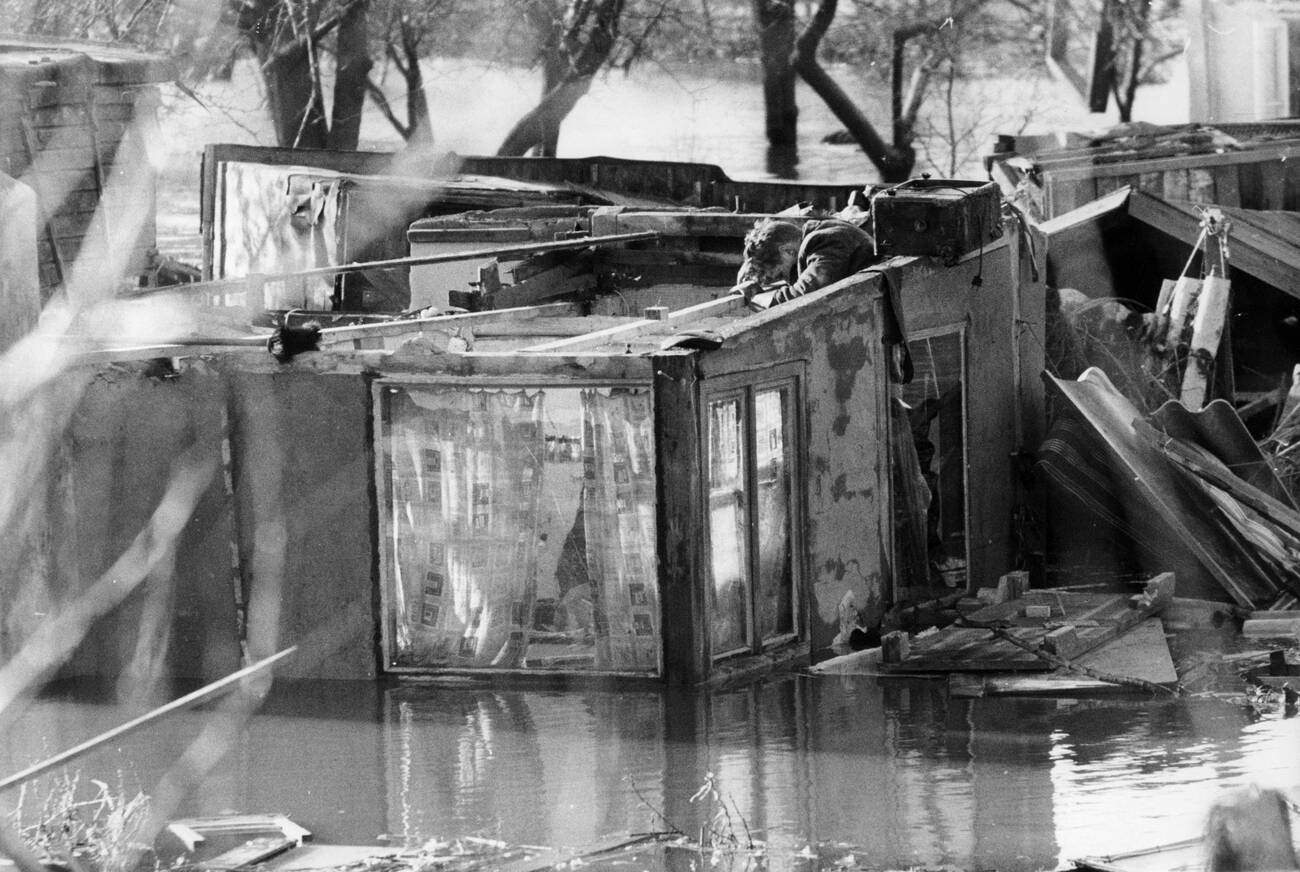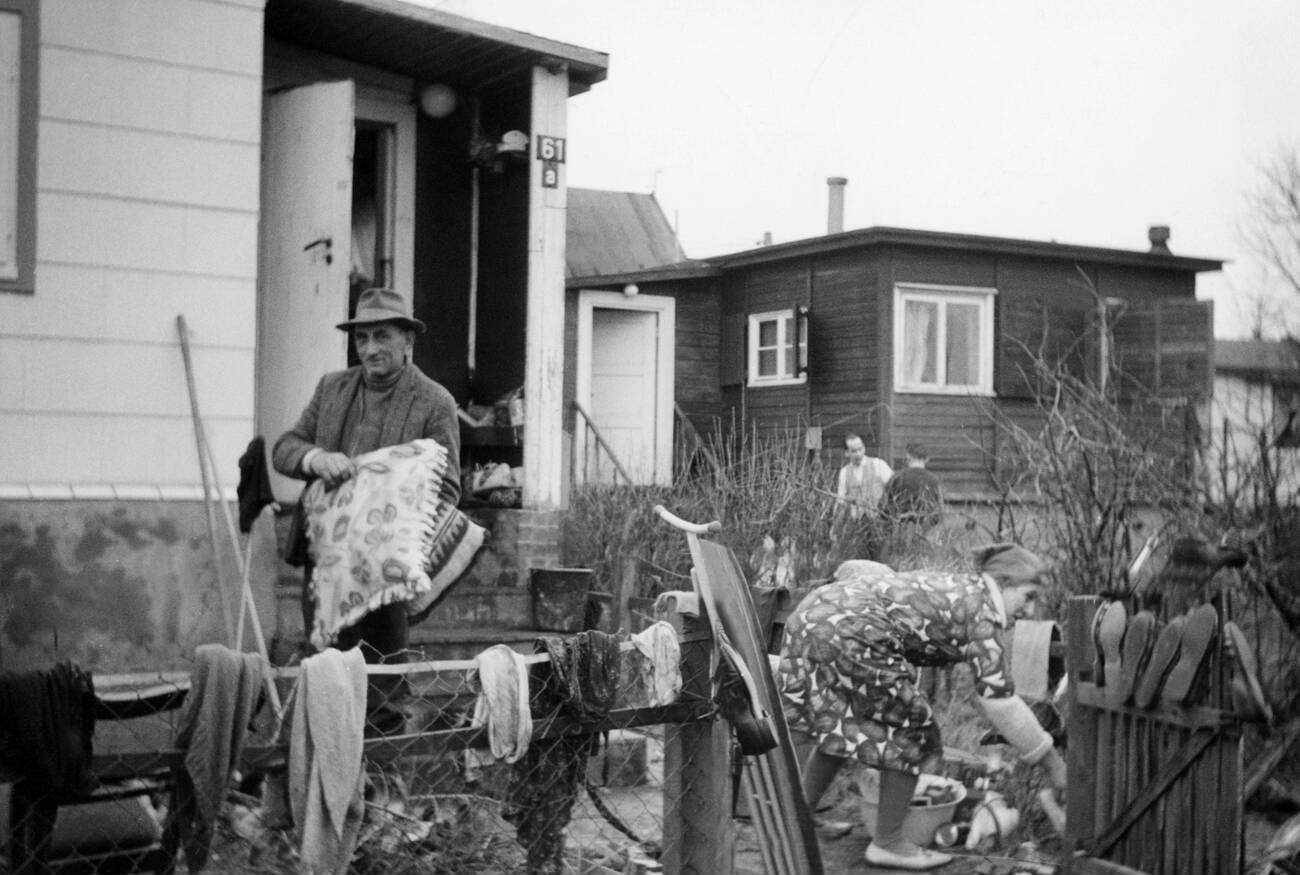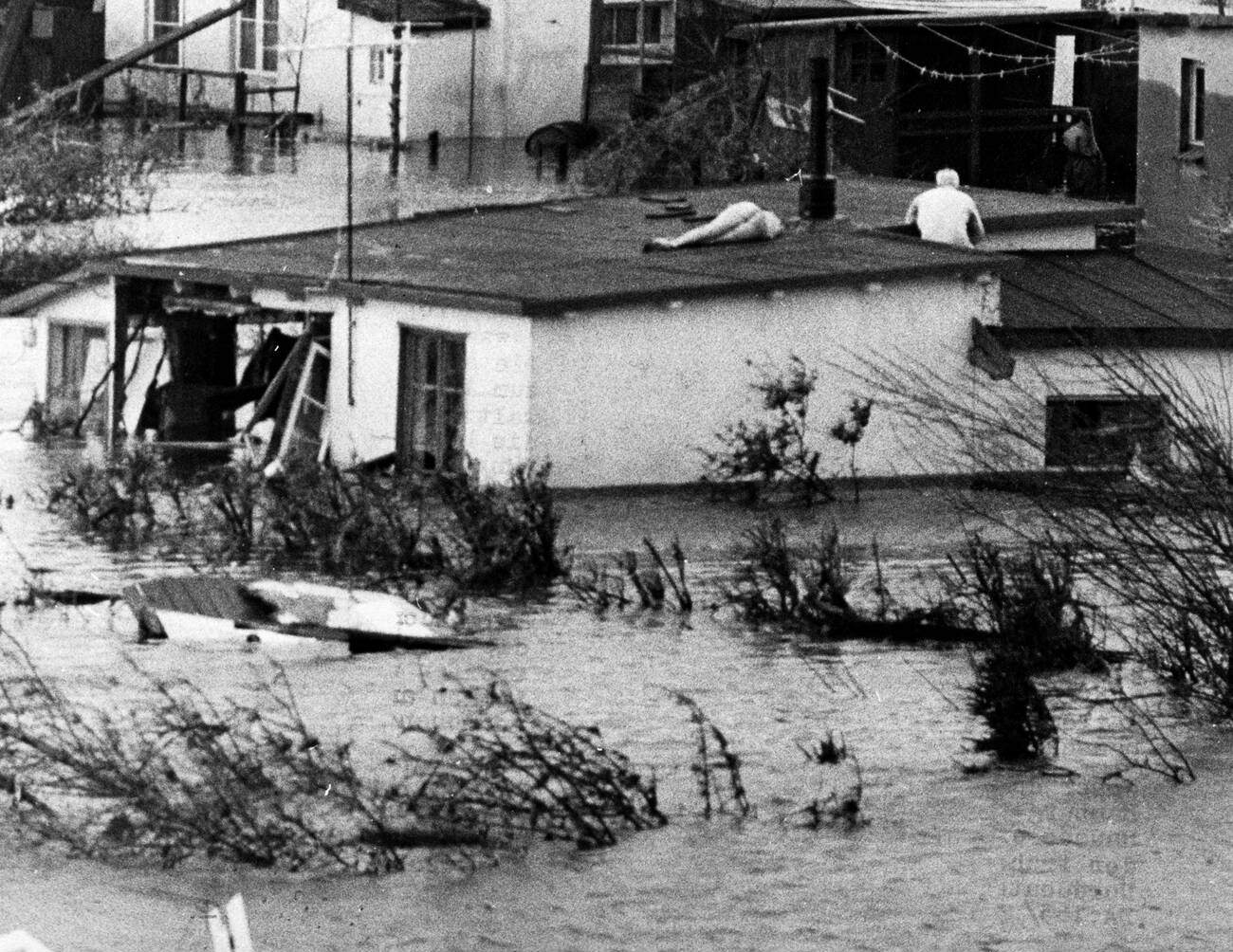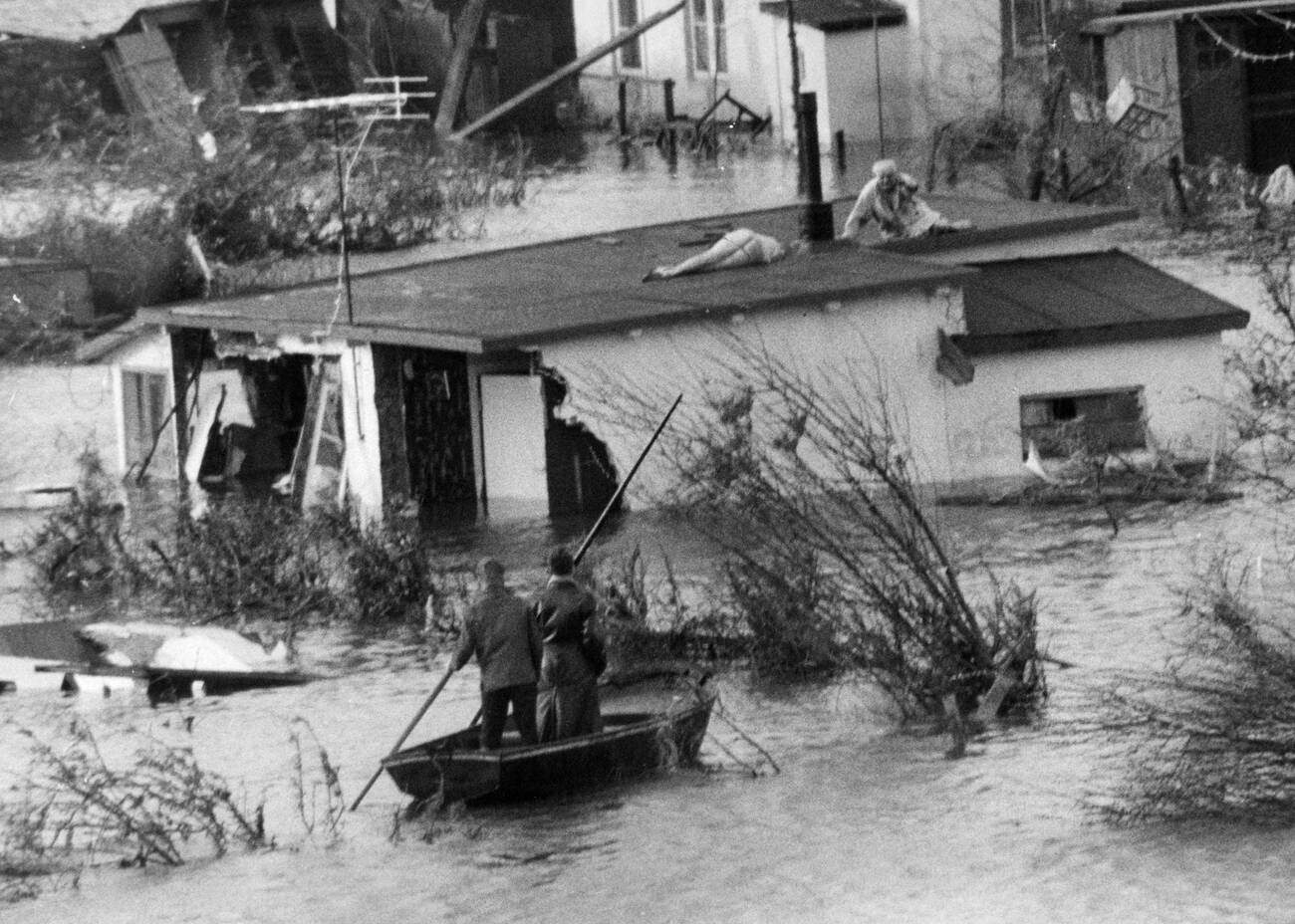On the fateful night of February 16, 1962, a devastating storm surged through the North Sea, unleashing what would be remembered as the North Sea Flood of 1962. The flood forever left its mark on history, causing widespread destruction and loss of life in affected areas, primarily in Germany, the Netherlands, and Denmark. Today, we remember this tragic event, which remains a crucial reminder of the importance of coastal resilience and preparedness in the face of natural disasters.
The North Sea Flood of 1962 resulted from a powerful extratropical cyclone known as the “Vincinette” that formed over the Atlantic Ocean and moved eastward, gathering strength as it approached the European coast. The cyclone and an unusually high spring tide produced a massive storm surge that overpowered coastal defenses, causing severe flooding and devastation in the affected regions.
Destruction and aftermath in Hamburg
In Germany, the city of Hamburg bore the brunt of the disaster. The floodwaters overran the city’s dikes, inundating more than 20% of its urban area, leaving over 60,000 people homeless and causing the deaths of an estimated 315 citizens. The historic Fish Market, the iconic St. Pauli Piers, and the Wilhelmsburg district were among the hardest-hit areas, with the latter being almost completely submerged.
In the aftermath of the North Sea Flood of 1962, the city of Hamburg faced a massive challenge in dealing with the destruction and devastation left behind. The floodwaters had inundated vast areas of the city, resulting in widespread property damage, displacement of residents, and loss of life.
One of the most visible and tragic manifestations of the destruction was the collapse of several buildings, particularly in the Wilhelmsburg district. The inundation of this densely populated area resulted in the collapse of numerous homes and buildings, some entirely flattened by the force of the floodwaters. This led to many casualties and left thousands of residents homeless.
The city’s infrastructure also suffered significant damage. Roads, bridges, and railway lines were destroyed or severely compromised, making transportation and communication difficulties in the aftermath of the flood. The city’s sewage system was overwhelmed, contaminating the floodwaters and posing a severe threat to public health. Gas and electricity lines were also damaged, leaving many without essential services for days or even weeks after the flood.
The flood also had a severe impact on Hamburg’s economy. The port, which was vital to the city’s trade and commerce, was crippled by the floodwaters. Ships were tossed onto dry land, and warehouses filled with goods were destroyed or rendered inaccessible. The flood also damaged or destroyed numerous businesses, factories, and shops throughout the city, leading to widespread unemployment and economic hardship.
The cleanup and recovery efforts in Hamburg were monumental, requiring significant resources and collaboration from the local, regional, and national governments and international aid organizations. In the weeks and months following the flood, thousands of volunteers descended on the city to help with the arduous task of clearing debris, repairing damaged buildings, and assisting those who had been displaced.
One of the most significant challenges faced by the city was finding temporary housing for the tens of thousands of people who had been left homeless. In response to this crisis, the city government and various relief organizations set up emergency shelters in schools, gymnasiums, and other public buildings. Friends or family members also took in many residents, while others were relocated to other parts of the country.
As the city began to rebuild, the Hamburg government took decisive action to ensure such a disaster would not be repeated. The “Hamburg Plan” was implemented, which involved the construction of new, more robust dikes, storm surge barriers, and pumping stations. The city also established a flood warning system and an emergency management plan, which have been instrumental in averting similar disasters in subsequent years.
In the Netherlands, the flood claimed the lives of more than 1,800 people, with the provinces of Zeeland, South Holland, and North Holland suffering the most significant damage. Coastal dikes were breached, and vast tracts of land were inundated, resulting in widespread property damage and the displacement of countless residents.
Denmark also experienced severe flooding along its western coast, with the cities of Esbjerg and Ribe mainly affected. Although the death toll was significantly lower in Denmark, the damage to infrastructure and property was extensive.
The North Sea Flood of 1962 was a tragic wake-up call for the affected countries. In the aftermath of the disaster, they embarked on ambitious programs to strengthen coastal defenses, improve flood forecasting and warning systems, and enhance their preparedness for future storm surge events.


